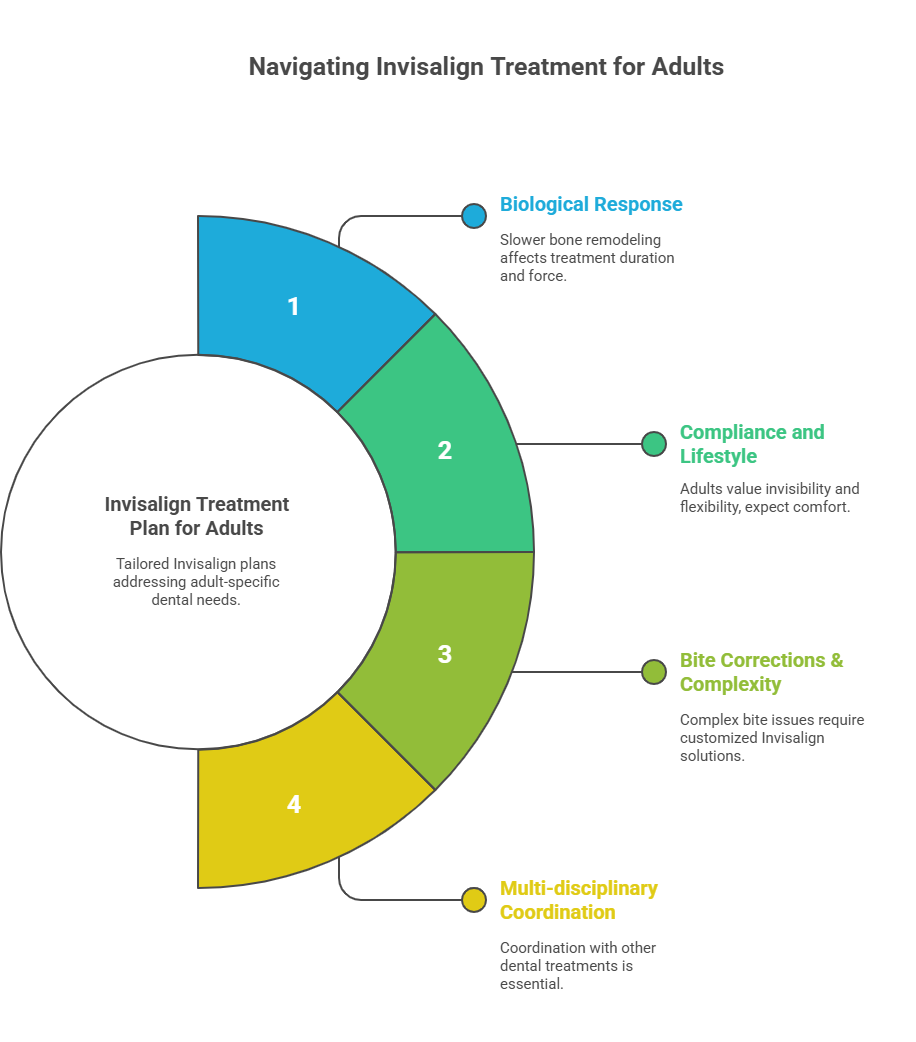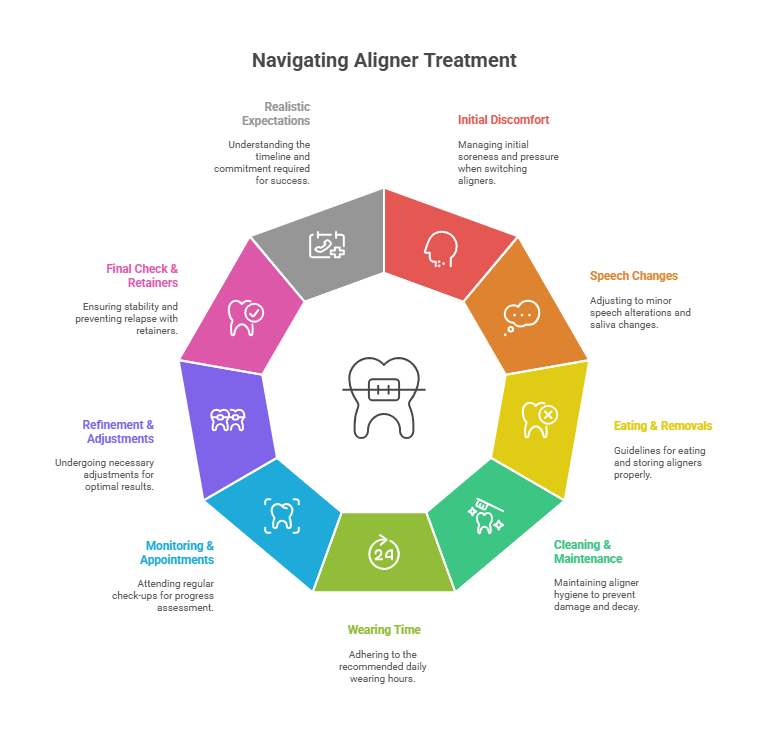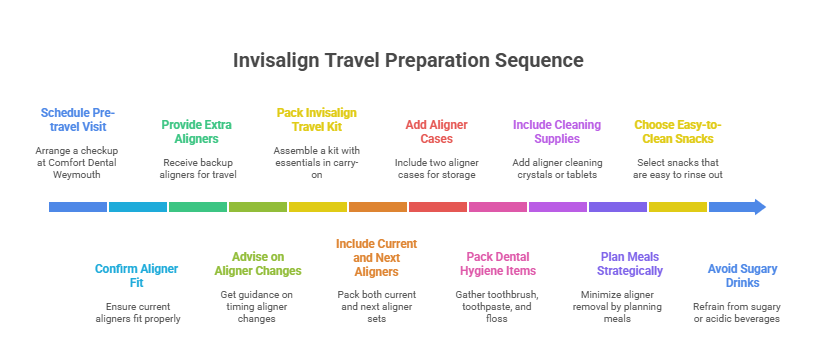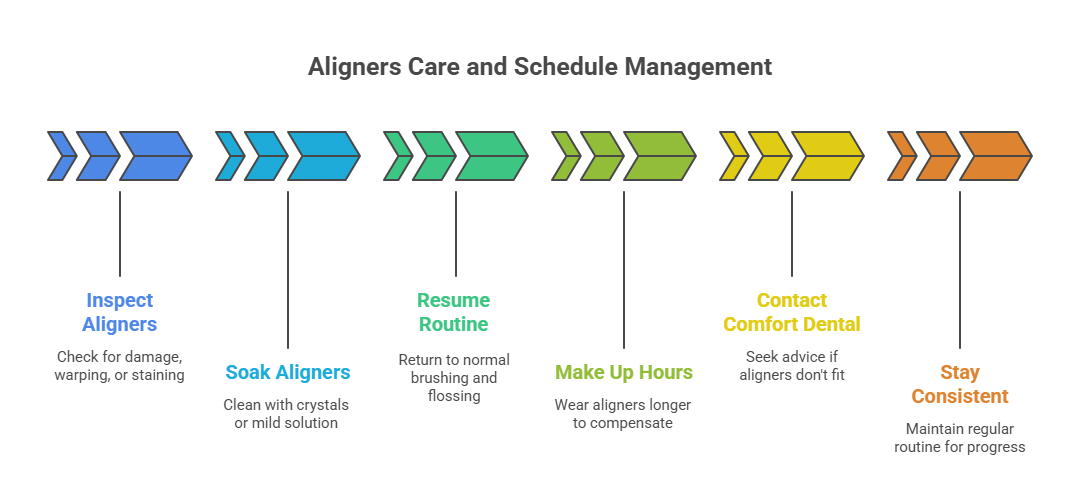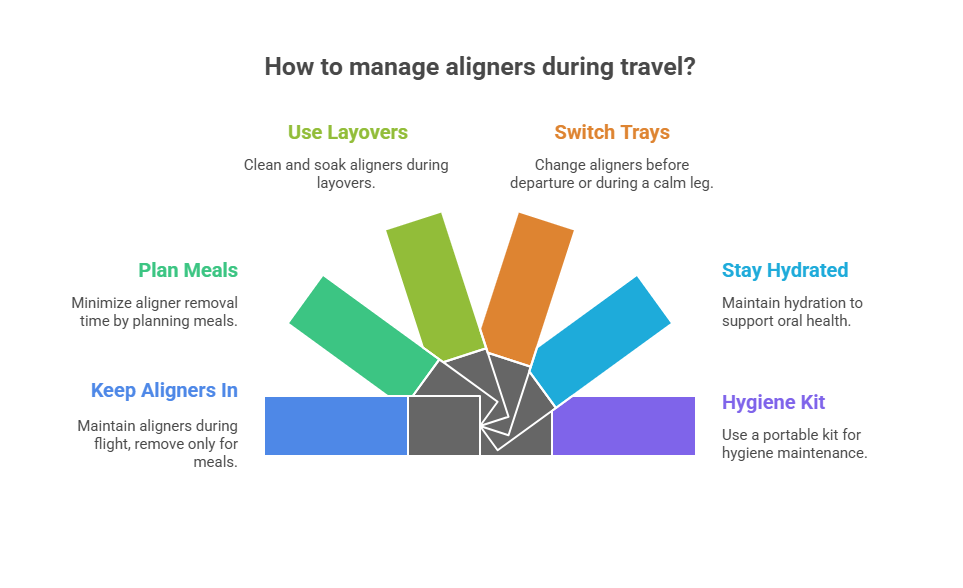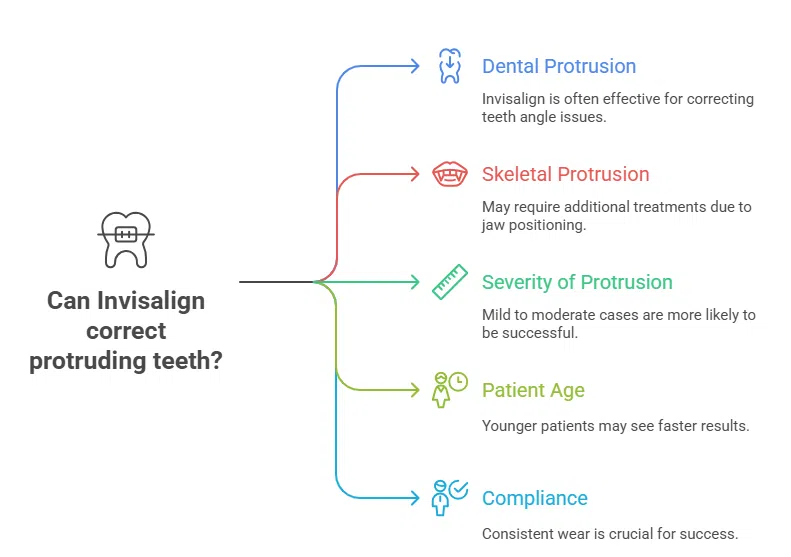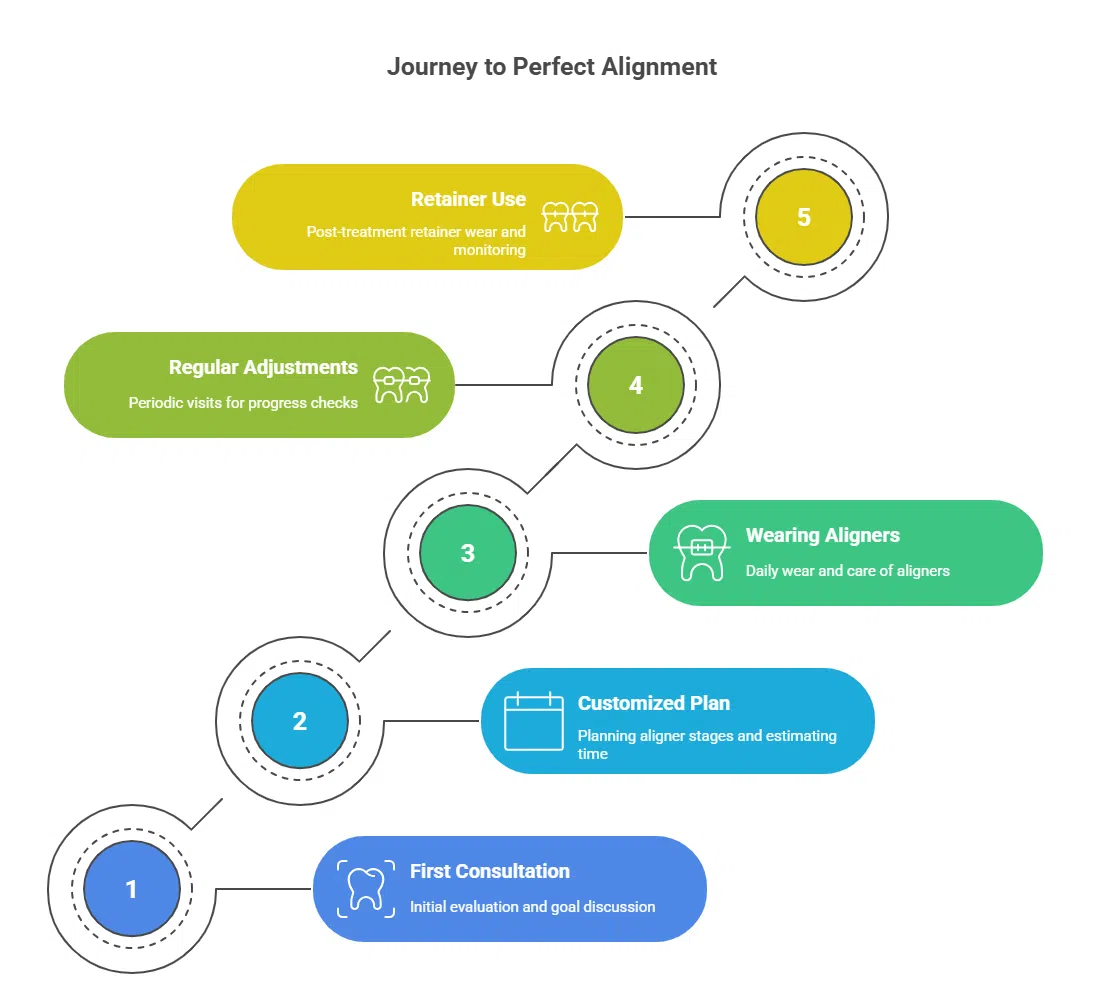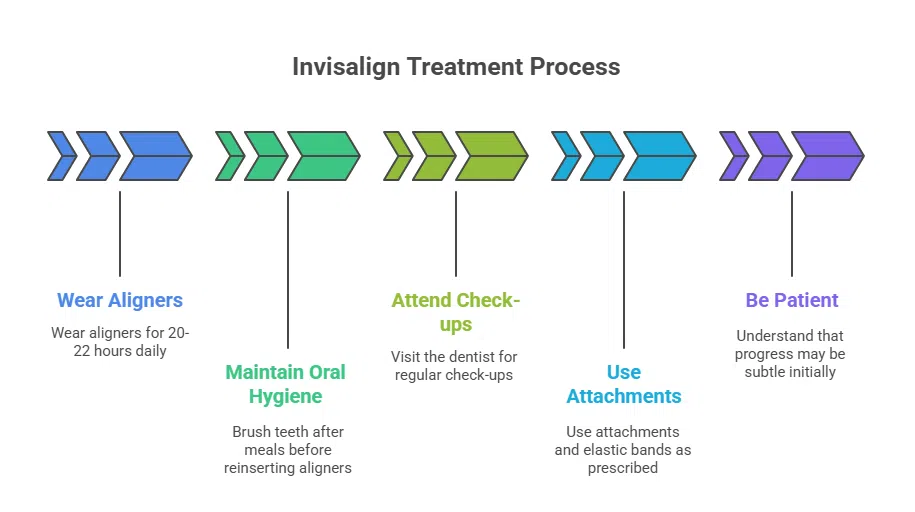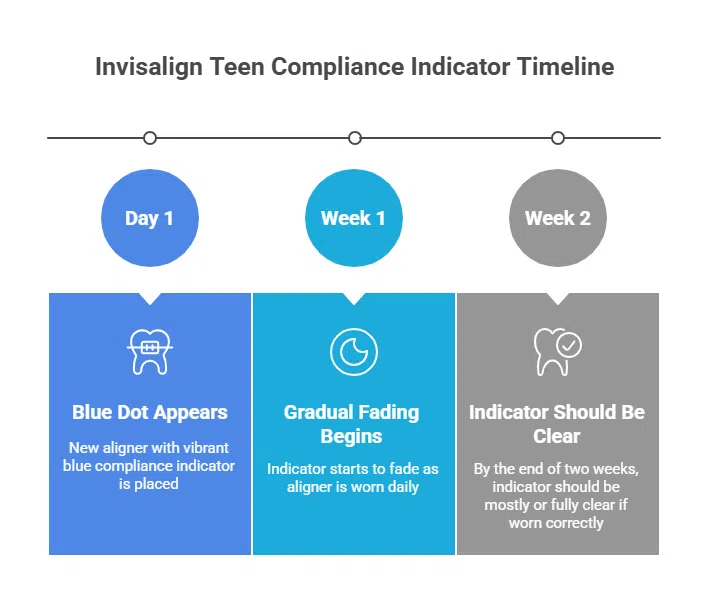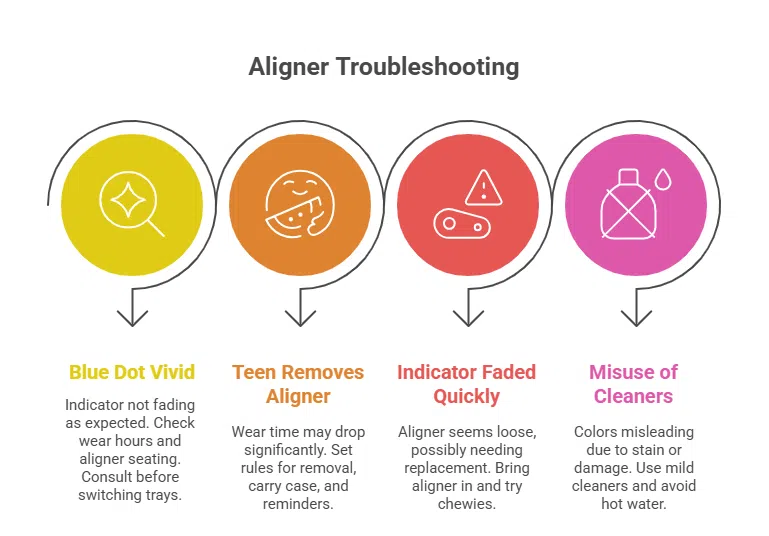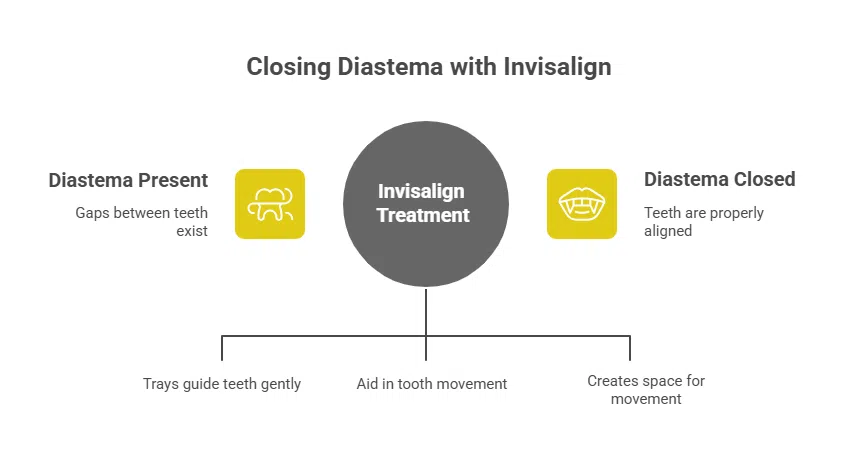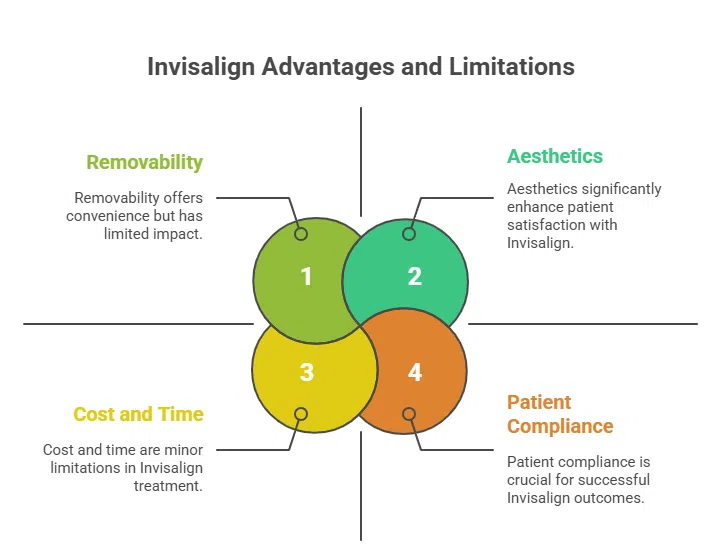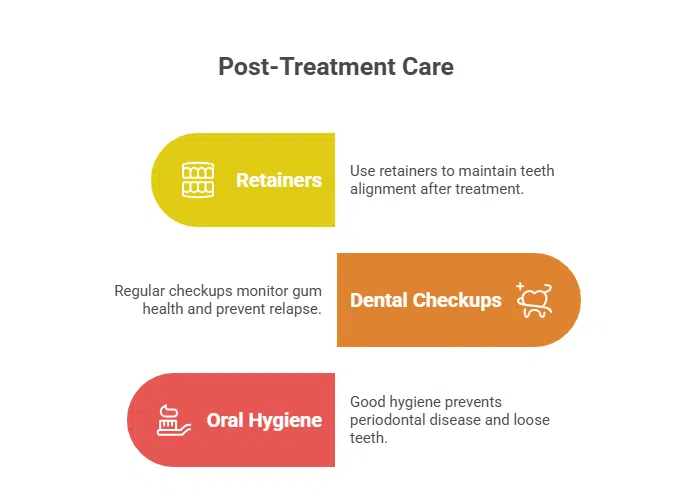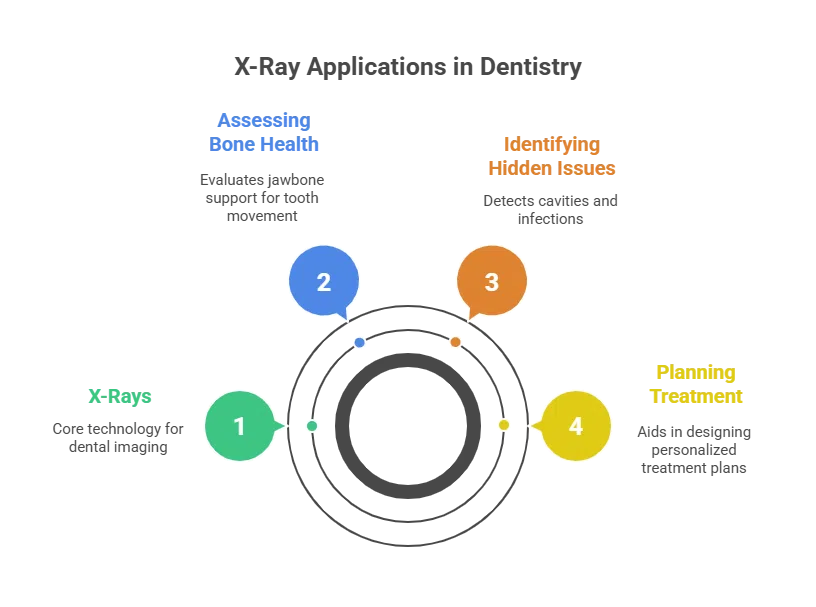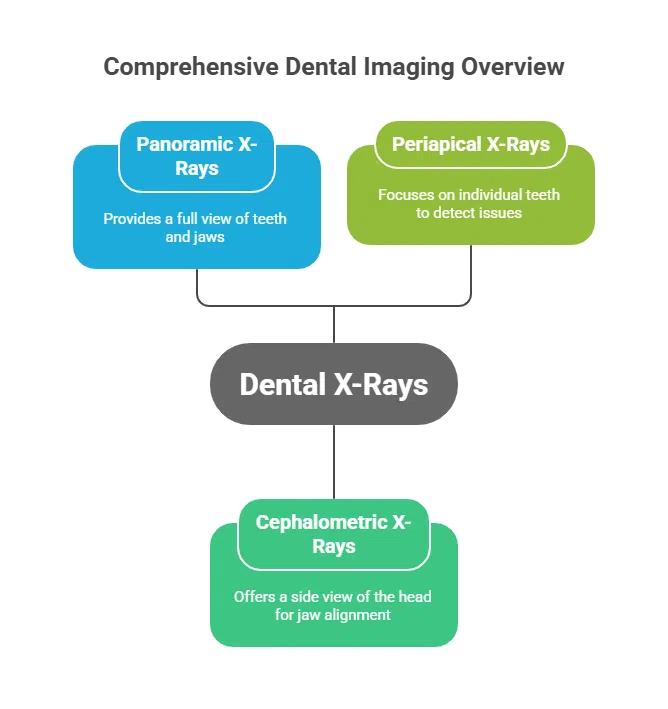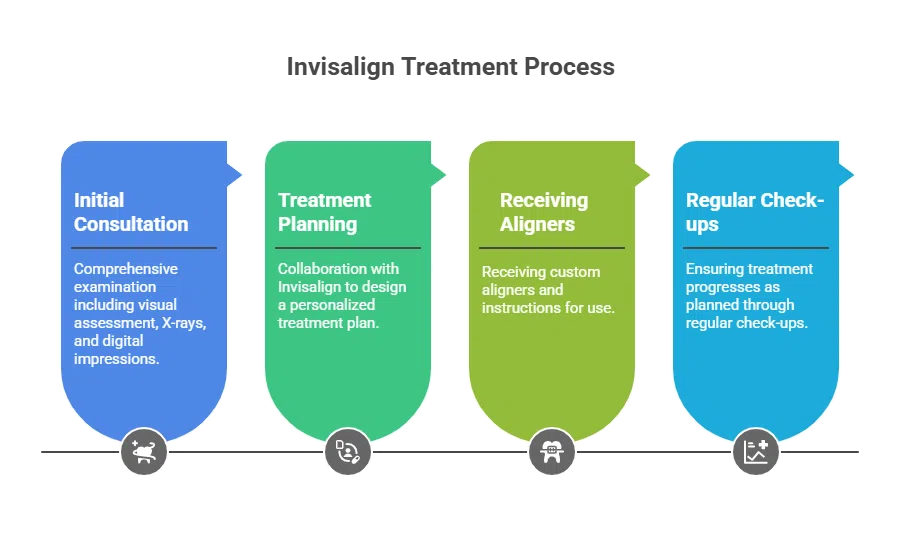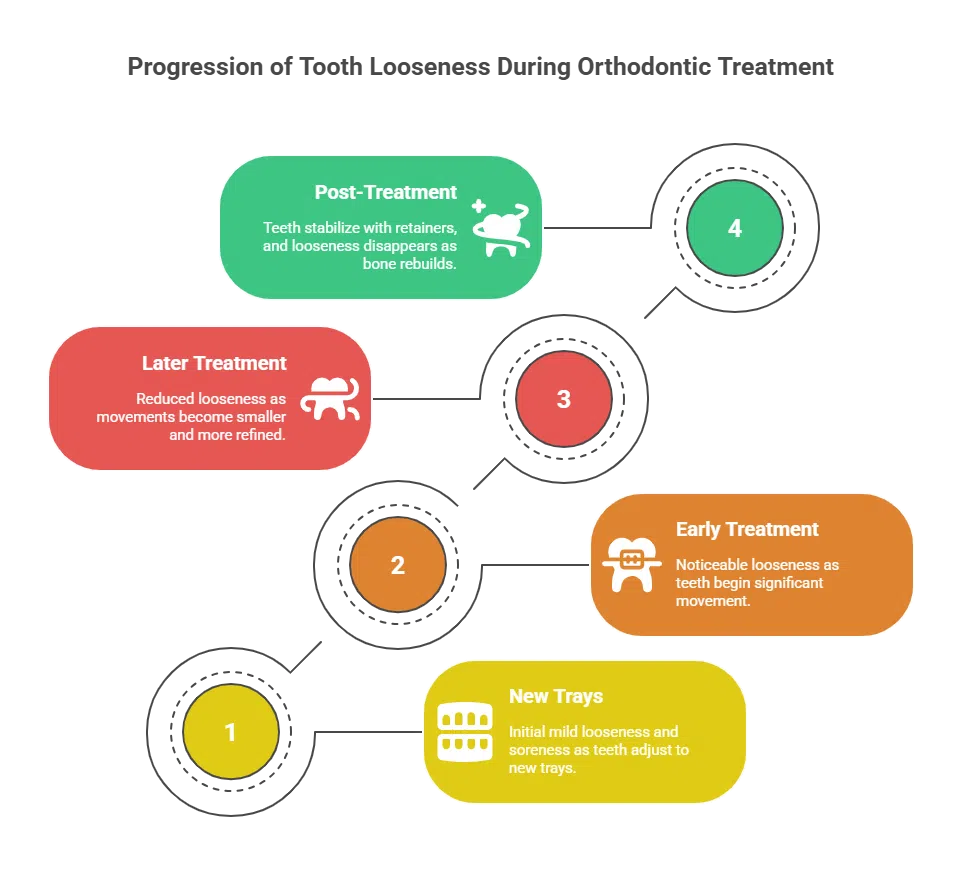Invisalign Without the Upfront Cost: Payment Plans That Help
Category: Invisalign
What Is The Invisalign Treatment Plan?
If you are in Weymouth, MA, and considering Invisalign orthodontic correction, you likely have asked: “What is the Invisalign treatment plan?” At Comfort Dental Weymouth, we believe in not just offering clear aligners, but explaining in detail how your journey will unfold—from consultation through retention. In this guide, we will walk you through each stage of a treatment plan, set expectations, and show why Invisalign is a popular, discreet alternative to braces.
What Is Invisalign, and Why Have a Treatment Plan?
Invisalign is a modern orthodontic system that uses a series of clear, removable aligners to gradually shift teeth into proper alignment—without metal wires or brackets.
But wearing clear aligners alone is not enough. A successful result requires a detailed treatment plan that maps how each tooth will move over time, when refinements are needed, and how retention will preserve the new smile.
Think of the Invisalign treatment plan as your roadmap: it anticipates problems, sequences tooth movements carefully, and helps the orthodontist or dentist monitor your progress. Without it, outcomes may be unpredictable, longer, or incomplete.
Moreover, because clear aligners are removable, patient compliance (wearing them 20–22 hours a day) is critical—another reason why having a plan helps set expectations and keeps treatment on track.
The 6 (or More) Phases of an Invisalign Treatment Plan

Different practices might break it into slightly more or fewer phases, but most agree on these core steps:
Consultation & Digital Records
- Your journey begins with a consultation. At Comfort Dental Weymouth, this is when we evaluate your smile, bite, and overall oral health.
- We take digital scans or impressions, photographs, and panoramic / cephalometric X-rays to assess bone structure and roots.
- These records form the basis of the custom Invisalign treatment plan.
- We also review your medical/dental history, discuss your smile goals, and confirm that you are a candidate for aligners.
- If you already searched “Invisalign treatment plan Weymouth MA,” this is where location-specific diagnostics matter.
Treatment Plan Design (ClinCheck)
- The data are sent to the Invisalign (Align Technology) lab, where a 3D model is created.
- Using ClinCheck software, your orthodontist or dentist drafts a digital simulation of how each tooth will move step by step.
- We review the simulation with you—this is your preview of Invisalign treatment plan before and after staging.
- If adjustments are needed, we iterate until the plan is optimized.
- This phase is crucial: it defines how many aligners, how much movement per stage, and where attachments or interproximal reduction (IPR) may be required.
Aligners Fabrication and Delivery
- Once the plan is approved, the aligners are fabricated—each tray representing a step in the plan.
- You’ll receive them (often in sets of several aligners) and we schedule your fitting appointment.
- At the first fitting, we ensure the aligners seat properly, place any attachments, and instruct you on wear protocol.
Active Aligner Wear Phase
- This is the core of your treatment. You will wear each aligner (or pair) for about 1 to 2 weeks before switching to the next.
- You must wear them 20–22 hours per day; remove only to eat, drink (not hot liquids), brush, and floss. Failure to comply can derail the timeline.
- Periodic checkups every 4-8 weeks allow us to monitor progress, reorder new aligners as needed, or make minor midcourse corrections.
Refinement / Midcourse Adjustments
- In many cases, after the last planned aligner, some fine-tuning is necessary—some teeth may not have reached ideal positions.
- Additional “refinement trays” can be prescribed, often at no extra charge (depending on provider).
- These adjustments ensure your final alignment is optimal.
Retention / Final Stabilization
- After completing active aligner wear, retainers (often clear plastic) are provided to maintain your results.
- Retention may be full-time initially, then nighttime-only.
- This phase is indefinite: teeth can shift over time without retention.
Some practices also consider a monitoring phase beyond active treatment to observe long-term stability.
How Long Is an Invisalign Treatment Plan Timeline?
One of the most common questions: how long is an Invisalign treatment plan timeline?
- For mild to moderate spacing or alignment cases, timeline often ranges from 6 to 12 months.
- More complex cases (e.g. bite correction, extractions, or severe crowding) may take 12 to 18 months or more.
- Some Invisalign “Express” or minor corrections can be completed in 3–6 months (for extremely mild needs).
- The refinement phase can add several weeks or even a month depending on needed tweaks.
- You should expect periodic visits every 4–8 weeks; sometimes fewer than traditional braces.
Because your personalized plan is mapped in ClinCheck early on, we can estimate total duration before you begin—with caveats that changes in compliance, biological response, or unexpected findings may adjust it.
When you ask, “how long is an Invisalign treatment plan timeline,” we aim to provide an estimate plus the possible swing range. At Comfort Dental Weymouth, we always build in buffer time for refinements to avoid surprises.
What Is the Invisalign Treatment Plan Cost?
Another core concern: “What is the Invisalign treatment plan cost?” The answer depends on several variables:
Factors Affecting Cost
- Complexity / Severity: More movement, bite changes, extraction cases, or jaw issues raise cost.
- Duration: Longer treatment means more aligners and more monitoring.
- Geographic location & overhead: Practices in higher-cost areas often command higher fees.
- Provider experience: Highly experienced orthodontists may charge more for their expertise.
- Refinements / extra aligners: If many adjustments are needed, costs may increase.
- Inclusions: Some offices include retainers, emergency visits, or even aligner replacement; others charge separately.
- Insurance / financing: Some dental plans offer partial orthodontic coverage, and many practices offer monthly payment plans to help.
Typical Cost Ranges
While cost varies, here are ballpark figures in the U.S. context (as a benchmark):
- Mild to moderate cases: $3,000 – $5,500
- Moderate to complex: $5,500 – $8,000+
- Express / minor corrections: possibly $2,000 – $3,500 in some markets
At Comfort Dental Weymouth, we provide a tailored cost quote after your consultation and digital records. We also help you review insurance benefits (many plans cover part of orthodontic care) and set up flexible monthly payment plans.
By integrating the long-tail “what is the Invisalign treatment plan cost” into your search, you’re likely to find pages like this that transparently lay out what factors matter.
Invisalign Treatment Plan for Adults — What’s Different?
When considering “Invisalign treatment plan for adults,” there are several nuances:
Biological Response
- Adult bone remodeling tends to be slower than in teens, which may slightly extend treatment time or require more careful force management.
- Prior dental work (crowns, bridges, implants) may complicate movements or require staging.
Compliance and Lifestyle
- Adults often appreciate the near-invisible nature, flexibility to remove aligners for meetings, photos, or meals.
- However, some adults are less forgiving of discomfort or extended refinement phases—clear communication of expectations is critical.
Bite Corrections & Complexity
- Adults sometimes present more complex bite issues, periodontal considerations, or missing teeth, requiring an Invisalign plan that works around those constraints.
Multi-disciplinary coordination
- In adult cases, alignment may need coordination with periodontal work, restorative dentistry (veneers, crowns), or implants. The Invisalign treatment plan must anticipate and integrate with those phases.
At Comfort Dental Weymouth, we craft adult plans that balance esthetics, comfort, and biological limitations. We simulate “Invisalign treatment plan before and after” expectations accordingly.
Invisalign Treatment Plan vs Braces Treatment Plan
It’s useful to understand how an Invisalign treatment plan differs from a braces treatment plan:
| Feature | Invisalign Treatment Plan | Braces Treatment Plan |
| Movement Type | Incremental tooth movement via clear trays | Wire-based force mechanics and bracket adjustments |
| Visibility | Virtually invisible | Visible metal or ceramic brackets and wires |
| Removability | Removable for eating / hygiene | Fixed until device is removed |
| Adjustments | New trays every 1–2 weeks; fewer office visits | Wire changes, bracket tweaks more frequently |
| Comfort | Often less soft‐tissue irritation (no wires) | Brackets/wires may cause irritation, emergencies |
| Hygiene | Easier brushing and flossing (remove aligners) | Brushing/flossing complicated by wires and brackets |
| Suitable Cases | Mild to moderate crowding/spacings; some bite corrections | More complex cases (severe rotations, extractions, large bite shifts) |
| Refinement Phase | Commonly built in | Also possible, but mechanics differ |
| Retention | Retainers post-treatment | Retainers likewise, often same requirement |
By comparing “Invisalign treatment plan vs braces treatment plan,” patients can see pros/cons in clarity, comfort, and versatility. That helps with decision-making.
What to Expect During Invisalign Treatment Plan — Tips & Best Practices
As you go through the journey, here’s what to expect and how to get the best outcomes:
Initial Discomfort
- Each time you switch to a new aligner, you may feel pressure or soreness for 1–3 days—this is expected as teeth move.
Speech / Saliva Changes
- Some minor lisp or increased saliva may occur initially, adjusting within days.
Eating / Removals
- Remove aligners to eat or drink anything other than water.
- Always store removed aligners in their case—don’t wrap in napkin (risk of loss).
- Avoid hot/hot liquids while wearing aligners—they can warp the plastic.
Cleaning & Maintenance
- Clean aligners daily using a soft brush and clear, unscented soap or aligner cleaning solution. Avoid toothpaste (can scratch) and hot water.
- Keep your teeth clean—food particles trapped between teeth and aligner can cause decay.
Wearing Time
- Wear aligners 20–22 hours per day. Skipping or leaving them out will slow or derail treatment.
- Use a reminder system (phone alarm, sticky note) if you forget after eating.
Monitoring & Appointments
- Attend scheduled appointments every 4–8 weeks so we can assess fit, check progress, and provide next sets.
- If an aligner does not fit, don’t force it. Contact us so we can evaluate (sometimes we need to “seat” it, provide an intermediate tray, or adjust the plan).
Refinement & Adjustments
- Some minor mid-course adjustments may be needed (e.g. trimming, adding attachments, IPR, etc.).
- Don’t be discouraged if refinement is needed—this is part of delivering perfection, not a failure.
Final Check & Retainers
- Once active alignment is complete, we verify the final result and ensure bite is stable.
- Retainers are provided; follow instructions carefully to prevent relapse.
Realistic Expectations
- Changes often start in a few weeks, but full results require commitment.
- Your plan includes buffer time for small tweaks, so don’t fret if it goes a little longer.
Invisalign Treatment Plan Before and After: Realistic Results
When potential patients search “Invisalign treatment plan before and after,” they expect to see real transformations. At our practice, we maintain a patient gallery with:
- Digital before/after snapshots
- ClinCheck simulations compared to actual outcomes
- Notes about refinements needed and post-treatment retention
- Testimonials and stories illustrating how challenges (rotations, bite, extractions) were addressed
These case studies help set realistic expectations—nobody’s outcome is perfectly linear, but with a careful plan and compliance, excellent results are common.
We often show side-by-side comparisons of the treatment plan design (the predicted result) and the actual final smile, highlighting small deviations and how refinements closed the gaps.
If desired, we can integrate augmented-reality or overlay images so patients can visualize their own “before and after” during the consultation.
Why Choose Comfort Dental Weymouth for Your Invisalign Treatment Plan
When considering “Invisalign treatment plan Weymouth MA,” it’s important to choose a provider committed to excellence, communication, and technology. At Comfort Dental Weymouth, we offer:
- A local, patient-centric practice with strong ties to Weymouth and the South Shore area
- Experience in both general dentistry and clear aligner care (we currently offer Invisalign as part of our service suite)
- Use of advanced digital scanning and 3D imaging for precise record-taking
- Transparent cost estimates, inclusive packages, and flexible financing
- Detailed consultations where we walk you through your customized Invisalign treatment plan before any commitments
- Ongoing patient support, comfort-focused care, and follow-up for refinements and retention
If you live in Weymouth, MA, and search “Invisalign treatment plan Weymouth MA,” you’ll want a practice that understands local needs, ensures convenience, and delivers genuine, predictable results.
People Also Ask (10 Q&A)
- What is included in an Invisalign treatment plan?
The plan includes diagnostic scans/X-rays, a ClinCheck simulation, fabrication of aligners, monitoring appointments, refinements, and retention phase. - How many aligners are in a typical Invisalign treatment plan?
It varies, but most plans use 20–30 aligners (some more or fewer depending on case complexity). - How accurate is the Invisalign treatment plan simulation?
ClinCheck gives a very good estimate, but biological response, slight deviations, or minor midcourse changes can lead to adjustments. - Can I see the Invisalign treatment plan before starting?
Yes—during consultation, we review your digital plan and simulated “before and after” so you know what to expect. - Does Invisalign treatment plan include retainers?
In many practices, yes, retainers are included in the package. But confirm with your provider. - What if my teeth don’t move as planned?
Refinement trays or midcourse corrections address deviations. That is built into many treatment plans. - Do I need attachments in my Invisalign treatment plan?
Yes, attachments (small tooth-colored “buttons”) are often part of the plan to help certain tooth movements. - Can I alter the Invisalign treatment plan mid-way?
Minor changes are possible (within reason), but significant plan changes may require restarting or adjustments via refinements. - Will an Invisalign treatment plan fix my bite?
Many treatment plans address mild to moderate bite issues; severe jaw alignment cases may require additional orthodontic or surgical intervention. - What happens after the Invisalign treatment plan ends?
You’ll move into retention: wearing retainers (initially full-time, then nighttime), and periodic monitoring to prevent relapse.
Frequently Asked Questions (FAQs)
- How long does an Invisalign treatment plan take?
Most cases take 6–12 months; complex cases may take 12–18+ months. - How much does an Invisalign treatment plan cost?
Costs generally range from $3,000 to $8,000 depending on complexity, location, and provider. - Will the Invisalign treatment plan show my final result?
Yes, the ClinCheck simulation gives you a preview of the expected result, though actual outcomes may vary slightly. - How many visits are needed during an Invisalign treatment plan?
Usually one check every 4–8 weeks, fewer than traditional braces in some cases. - What if I lose an aligner during the plan?
Contact your provider immediately—often you’ll move to the next aligner early or re-order a replacement. - Is the Invisalign treatment plan painful?
Mild discomfort or soreness is normal when switching aligners, usually for 1–3 days. - Do teeth shift after the treatment plan is over?
Without proper retention, yes. Retainers help maintain your final alignment. - Are refinements part of the plan?
Many Invisalign providers include a refinement phase within their treatment plan to fine-tune the result. - Can I eat during the Invisalign treatment plan?
Yes—but you should remove aligners for meals and avoid foods that may damage or stain them. - Is everyone a candidate for an Invisalign treatment plan?
Not always—severe rotations, skeletal discrepancies, or missing teeth may require braces, surgery, or hybrid approaches. A consultation will determine your suitability.
Final Takeaways & Call to Action
Summary:
- The question “What is the Invisalign treatment plan?” hinges on understanding the roadmap of consultation → planning → aligner wear → refinements → retention.
- Your timeline and cost depend on the complexity of your case, compliance, and provider expertise.
- A good provider will walk you through the Invisalign treatment plan before and after simulation, manage expectations, and support you through each phase.
- When you search local phrases like “Invisalign treatment plan Weymouth MA”, you want a practice that delivers transparency, local expertise, and patient care.
If you’re in Weymouth, MA (or nearby) and want to explore your custom Invisalign journey, please visit Comfort Dental Weymouth, 47 Washington St, Weymouth, MA 02188, (781) 337-3300. We’ll map out your personalized Invisalign treatment plan, review your simulations, estimate cost, and help you decide if it’s the right path for your smile.
Can I Wear Invisalign During A Flight?
If you’re undergoing orthodontic treatment with Invisalign and planning air travel, you’re likely wondering: Can I wear Invisalign during a flight? The answer is: yes, in most cases you can—but you’ll need to follow certain precautions and best practices. At Comfort Dental Weymouth, we help patients in Weymouth, MA and the surrounding region maintain their treatment routines—even on the go. In this comprehensive guide, we’ll walk you through everything you need to know: from packing your travel kit to handling time zone changes, dealing with emergencies, and keeping your treatment on track.
We’ll also cover common concerns (pressure changes, security screening, etc.), share actionable tips, and answer the most common questions travelers with Invisalign have. Use this as your go-to travel checklist before you board.
Can I Wear Invisalign During a Flight?
The Short Answer
Yes—you can generally wear Invisalign during a flight. But you may need to remove them when eating or drinking (anything other than water) and ensure you maintain your 20–22 hours of wear time per day. The goal is to minimize disruption to your treatment schedule while handling the practical challenges of flying.
Why People Worry About Wearing Invisalign on a Plane
Many patients ask this because flying introduces a few complicating factors:
- Cabin pressure changes and dry air
- Long stretches of time with limited access to a restroom
- Limited ability to brush and floss after meals
- The possibility of losing or damaging aligners
- Time zone shifts that may interfere with your wear schedule
We’ll tackle all of these below, so you can fly confidently without compromising your smile progress.
Pre-Flight Preparation: What to Do Before You Leave Weymouth, MA
Schedule a Pre-travel Visit
Before your trip, come to Comfort Dental Weymouth for a brief checkup. We can:
- Confirm that your current aligners are fitting well
- Provide extra sets or backups (carry the next tray in sequence)
- Advise you about timing your aligner changes during travel
- Give you a printed copy or digital file of your treatment plan
- Ensure you’re up to date with cleaning supplies (e.g. cleaning crystals)
This gives you peace of mind in case something happens while you’re away.
Pack a Complete Invisalign Travel Kit
Your travel kit (in your carry-on) should include:
- Your current aline(r) set and the next set (if you will need to change mid-trip)
- Two aligner cases (one spare)
- Travel-size toothbrush, mild (nonabrasive) toothpaste or clear soap
- Floss or floss picks
- Aligner cleaning crystals or cleaning tablets
- A small mirror or foldable mirror
- Dental wax (for discomfort or sharp edges)
- Pain relievers, if permitted
- A small bottle of bottled water
- Your treatment plan, dentist contact info, and timeline
Always keep this kit in your carry-on, not checked luggage. That way, even if your checked bags are delayed, you still have what you need.
Plan Your Meals & Snacks Strategically
On travel days, plan to minimize the number of times you remove your aligners. For example:
- Eat two to three main meals instead of frequent snacking
- If you must snack, choose foods that are easy to brush or rinse out
- Avoid sugary or acidic beverages while wearing aligners
- Remove aligners for meals, then brush (or at least rinse) before putting them back
This helps preserve aligner effectiveness and avoid damage or staining.
During the Flight — Best Practices
Keeping Your Aligners In vs. Removing Them
- As a rule, keep your aligners in for as many hours as possible (aim for your usual 20–22 hours).
- Only remove them when you’re actively eating or drinking something besides water.
- Store the aligners in your case—never wrap them in a napkin or leave them loose (they can easily be discarded by mistake).
- Avoid removing trays during takeoff or landing if possible (store them safely first).
Dealing with Pressure Changes & Dry Air
- Some patients worry about pressure changes in flight affecting the fit of their aligners. In general, aligners are flexible and adapt well, so the pressure difference isn’t usually a big issue.
- However, the dry cabin air can cause your mouth to feel dry and make your aligners feel tighter or more irritating.
- Tip: Drink plenty of water throughout the flight (when your aligners are in).
- Consider having lubricating mouth sprays (alcohol-free) or rinsing your mouth to reduce discomfort.
Hygiene on the Plane
- After eating, use your travel toothbrush or a rinsing technique to clean your teeth before reinserting aligners.
- If brushing isn’t possible, at least rinse your mouth thoroughly with water and rinse your aligners in a bottled water bottle.
- Wipe your trays gently with a clean cloth or rinse in cool (not hot) water. Hot water can warp the plastic.
- Use cleaning crystals or soak aligners when you have downtime (e.g. layover).
Handling Time Zones & Aligner Changes
If your trip spans a time zone change:
- It’s usually best to stick with your home time zone schedule when changing aligners (so you don’t shorten or lengthen a tray’s usage too much).
- Set alarms or reminders to help you remember when to change trays or reinsert after meals.
If your change date falls during your trip, you may want to switch either just before departure or during a less hectic leg of your trip. Bring both sets.
Post-Flight / After Travel Care
Inspect & Clean Immediately
Once you reach your destination:
- Inspect your aligners for damage, warping, or staining
- Soak them in cleaning crystals or a mild solution
- Resume your normal brushing, flossing, and aligner schedule
Adjusting If You Miss Hours
If you miss some wear hours (e.g. long delays, forgotten meals):
- Try to make up the hours later by wearing longer in non-meal times
- Don’t skip tray changes unless recommended by your orthodontist
- If your aligners no longer fit properly, contact Comfort Dental Weymouth for advice
Staying on Schedule
Whenever possible, return to your regular routine as soon as possible. Consistency is key to avoid delaying your treatment progress.
Common Pitfalls & How to Avoid Them
| Problem | Risk | Best Practice / Solution |
| Losing or misplacing aligners mid-flight | Treatment disruption | Always use your aligner case; carry spare set |
| Warping trays from heat | Poor fit | Keep aligners out of hot environments (don’t leave them on plane trays or in sunlight) |
| Stains or odors | Cosmetic / hygiene | Remove for staining foods / drinks; rinse or clean before reinserting |
| Excessive tray changes | Overdoing movement | Don’t change trays early just because you’re traveling – follow your plan |
| Skipping cleaning | Plaque or bacteria buildup | Brush or at least rinse after every meal; soak daily |
By preparing ahead and staying disciplined, most aligner issues during travel can be avoided.
Why Invisalign Is Traveler-Friendly (Compared to Braces)
- No wires or brackets means fewer emergencies (no poking wires)
- You can remove them for meals, photos, or speaking (though try not to leave them out long)
- They’re easier to carry and transport (fits in a small case)
- Many patients complete their treatment on time even while traveling—if they stick to best practices
Scenario Examples & Tips
Short Domestic Flight (2–4 hours)
- You can often keep your aligners in during the flight
- Remove them only for eating or drinking non-water
- Rinse before putting them back
Long-Haul or Overnight International Flight
- Plan meals so your aligners are out for minimal time
- Use layovers to clean and soak your trays
- Consider switching trays either before departure or at a calm leg
- Stay well hydrated
- Use portable mirror, cleaning kit to maintain hygiene
Multi-Leg Trips with Layovers
- Use layovers to reset your hygiene routine
- Rinse, soak, brush during those gaps
- Keep your travel kit accessible
Local Considerations for Weymouth, MA Residents
If you’re traveling from Weymouth, MA via Boston Logan or regional airports:
- Use your map to locate airline lounges or restrooms with better facilities to clean aligners
- Ask your dentist in Weymouth for a pre-travel cleaning (so your teeth are in the cleanest state before a long trip)
- Confirm your dental practice (Comfort Dental Weymouth) is reachable via telehealth or phone in case you need remote advice
- If your travel includes destinations without reliable dental care, request additional backup trays or an in-trip checkup agreement
Because Comfort Dental Weymouth already serves the local community, we’re familiar with typical flights our patients take and can tailor advice based on destinations.
“People Also Ask” — 10 Common Questions & Answers
- Can I keep Invisalign in while flying?
Yes — keeping the aligners in during the flight (except during meals) helps maintain your 20–22 hour daily wear time. - Will airplane cabin pressure damage Invisalign trays?
Generally, no. The plastic is flexible and pressure variations in flight don’t typically warp or damage aligners. - Do I need to remove Invisalign for airport security?
You can wear your aligners through security screenings; they don’t set off metal detectors. - What if I lose an aligner while traveling?
Use the previous set or the next one (if timing allows), and contact your orthodontist promptly for a replacement. - How do I clean my aligners mid-flight?
Rinse with bottled water or use a soft toothbrush (if possible). When you have time, soak in cleaning solution. - Can I change aligners while on vacation?
Yes, if your schedule calls for it, but be careful not to shorten or lengthen usage too much due to time zone shifts. - Will time zones affect my aligner wear schedule?
They can — it’s often easier to stick with your home time schedule for consistency or gradually adjust. - Is it safe to drink water with Invisalign while flying?
Yes — water is safe and actually beneficial to keep your mouth hydrated. - How long can I go without wearing aligners before treatment is affected?
Skipping a few hours occasionally is manageable, but missing many hours repeatedly may slow your progress. - Should I bring extra aligners on my trip?
Absolutely — carrying your current, previous, and next set gives you a buffer in case of damage or loss.
Frequently Asked Questions (FAQ)
Q1: Does Invisalign crack more easily on a plane?
A: Not normally. As long as you don’t consume hot beverages or place trays in hot environments, they remain resilient.
Q2: Can I wear Invisalign during takeoff and landing?
A: Yes — but avoid removing them during those times to reduce risk of losing them or handling awkwardly.
Q3: What if I accidentally swallow a small part or clip?
A: That’s very unlikely. If aligners are intact, nothing should detach. If something breaks, contact your dentist right away.
Q4: Will my teeth feel extra sensitive because of pressure changes?
A: Some patients report mild sensitivity during takeoff/landing, but it usually passes quickly when normal pressure resumes.
Q5: Can I drink coffee or soda while flying with Invisalign in?
A: No — remove your aligners first. These beverages can stain and damage the trays.
Q6: What if the airline doesn’t allow me to carry cleaning liquids?
A: Use travel-size quantities that comply with airline liquid limits (e.g. ≤ 3.4 oz) and carry them in a clear plastic bag.
Q7: Can I use mouthwash to clean aligners mid-flight?
A: It depends on the mouthwash — avoid colored or alcohol-based ones as they may degrade or stain plastic. Use clear, mild options.
Q8: If my tray is loose after a flight, what should I do?
A: Try reseating it gently. If it still doesn’t fit, switch to the previous set and contact your dentist.
Q9: Can I skip a tray change because I’m busy traveling?
A: It’s not ideal. Unless advised otherwise, follow your planned change schedule from your orthodontist.
Q10: Should I bring a mirror when flying with Invisalign?
A: Yes — a small foldable mirror helps you inspect aligner fit and cleanliness before reinserting.
Conclusion
Travel — especially by air — doesn’t have to derail your Invisalign treatment. With the right planning, preparation, and care, you can maintain your progress while enjoying your trip. At Comfort Dental Weymouth, our goal is to support you whether you’re in town or in the air. Before departure, stop by our office for a prep visit, grab your Invisalign travel kit, follow the hygiene and wear tips above, and stay consistent with your schedule.
If you ever encounter a problem — damage, fit issues, missing hours — reach out to us. We’re here to guide you so that when you return to Weymouth, your smile is still on track. If you are looking for a Weymouth dentist near you, please visit Comfort Dental Weymouth, 47 Washington St, Weymouth, MA 02188, (781) 337-3300.
Can Invisalign Fix Protruding Teeth?
Protruding teeth, often called “buck teeth,” overjet, or simply front teeth that stick out, can be both a cosmetic concern and a functional issue. Many people in Weymouth, MA, ask: Can Invisalign fix protruding teeth? At Comfort Dental Weymouth, we believe the answer is yes—in many cases—with the right evaluation, planning, and patient commitment. This guide will explain precisely how Invisalign can address protruding teeth, when it works best, what the process involves, what to expect in Weymouth, and how it compares to other treatments. We’ll also cover your questions, cost considerations, timelines, and frequently asked FAQs to help you make an informed decision.
What are Protruding Teeth?
- Definition: Protruding teeth refers to teeth, usually in the front (upper or sometimes lower), which “stick out” more than typical alignment. In orthodontics, this can be related to overjet (horizontal distance between upper and lower front teeth), or sometimes from dental crowding or jaw issues.
- Causes include genetics, childhood habits (thumb-sucking, pacifier use), tongue thrusting, uneven jaw growth, loss of teeth, or trauma.
- Problems associated: beyond cosmetic appearance, protruding teeth can increase risk of injury (if bumped), speech issues, bite difficulties, uneven wear, gum exposure leading to gum problems, and maybe self-confidence issues.
Can Invisalign Fix Protruding Teeth?
The short answer: Yes—In many mild to moderate cases.
But there’s nuance. Whether Invisalign can successfully fix protruding teeth depends on:
- Type of protrusion: Is it dental (teeth angle) vs skeletal (jaw positioning)?
- Severity: How far forward are the teeth? How deep or shallow is the bite?
- Age: Younger patients (teens) sometimes get faster results; adults often still viable, but movement is slower, and skeletal issues may need adjunct treatment.
- Compliance: Invisalign must be worn ~20-22 hours per day.
Research and Invisalign’s own resources show that buck teeth (upper front teeth protruding) are among the treatable cases.
For example, Invisalign’s site “Treating Buck Teeth with Invisalign Clear Aligners” asserts that many cases of buck teeth/overjet can be corrected using Invisalign.
How Invisalign Works for Protruding Teeth
- Initial Assessment & Diagnosis: At Comfort Dental Weymouth, we perform dental exams, impressions or digital scans, X-rays, photos. We evaluate whether protrusion is mainly dental, skeletal, or a mix.
- Treatment Plan Creation: Based on your dental records, the plan will map out how teeth need to move, in what sequence, and whether attachments (small tooth “buttons”) or elastics are needed to assist.
- Aligners Use: You wear a series of custom clear aligners, each set for approx. two weeks, switching to the next. Each aligner applies gentle pressure to shift teeth.
- Regular Monitoring: Periodic check-ups to measure progress, adjust plan if needed.
- Retention Phase: After treatment, retainers are used to keep teeth in place. Missing retention leads to relapse (teeth moving back).
When Invisalign May Not Be Enough
While Invisalign is powerful, there are cases where alone it may not fully correct protruding teeth. These include:
- Severe skeletal overjet / jaw discrepancy: If the maxilla (upper jaw) or mandible (lower jaw) is significantly misaligned, surgical orthodontics or jaw surgery might be required. Invisalign can handle tooth movement, but not bone repositioning.
- Very protrusive teeth with root issues or very thin bone support: If teeth are already angled too far, or bone is not strong enough, moving them further may risk root resorption or gum recession.
- Poor compliance: If aligners aren’t worn as prescribed, movements may stall or revert.
- Age-related constraints: In fully grown adults, bone remodeling is slower; if skeletal components are involved, treatments are more complex.
Invisalign vs Braces for Protruding Teeth
| Factor | Invisalign | Traditional Braces |
| Appearance / Discreetness | Nearly invisible, clear aligners | Metal/ceramic brackets/wires very visible |
| Comfort | Smooth, less irritation | Wires/brackets may irritate cheeks, need adjustments |
| Removability | Removable → easier oral hygiene, eating | Fixed → more dietary restrictions, harder cleaning |
| Control over severe tooth/jaw movement | Good for mild to moderate; less control for very complex or skeletal issues | Often better for teeth requiring large movements or skeletal work with appliances |
| Treatment Duration | Typically 6-18 months (for many cases) | Often similar or sometimes longer depending on complexity |
| Compliance needed | High (wear 20-22h/day) | Less patient-controlled; brackets are always working |
From Weymouth Dental Associates’ site: Invisalign in Weymouth, MA is offered and they note that Invisalign is “meant for patients with minor orthodontic or alignment problems such as crooked teeth.” They caution that “moderate to severe issues” may need alternative methods.
What to Expect at Comfort Dental Weymouth
If you choose Comfort Dental Weymouth, here’s how your path might look:
First Consultation
- Clinical evaluation: digital scans, photographs, X-rays.
- Discussion about goals: aesthetic desires, functional concerns (bite, speech).
- We check long-term oral health: bone, gums, roots.
Customized Invisalign Plan
- We plan stages: how many aligner sets, whether attachments/elastics needed.
- Time estimate given (often between 8-18 months, depending on severity).
Wearing & Caring for Aligners
- Wear aligners ~20-22 hours/day. Remove only for eating/drinking (except water), brushing/flossing.
- Clean aligners properly. Avoid staining, warping.
Regular Adjustments & Check-Ins
- Periodic visits to measure progress; new scans if needed.
- Minor refinements possible if teeth don’t move exactly as planned.
Retainer Use Post-Treatment
- Nighttime or full-time wear depending on case.
- Periodic check-ups to monitor that teeth remain in new position.
Time & Cost: What Patients in Weymouth Should Know
Timeline & Cost Estimates
- Time: Mild-moderate protruding teeth often resolve in 6-12 months; more severe overjet or mixed skeletal/dental cases may take 12-18+ months. Some sources say up to 18 months or more.
- Cost: Variable. In Weymouth, Massachusetts, cost depends on severity, number of aligners, whether attachments/elastics or combined treatments are needed, insurance, and whether you are paying out-of-pocket. Many providers offer payment plans. As a rough range, Invisalign tends to cost more than simple braces but less visible. For a local quote, scheduling a consultation at Comfort Dental Weymouth will give you precise numbers.
Practical Tips for Success
How to Maximize Your Chances with Invisalign
- Always wear your aligners as prescribed (20-22h/day). Skipping wear delays progress.
- Maintain excellent oral hygiene—brush after meals before putting aligners back in.
- Don’t skip check-ups. If teeth aren’t moving as expected, adjustments may be needed.
- Use attachments properly; elastic bands if prescribed.
- Be patient; movements often feel subtle at first.
Why Choosing a Local Provider Matters
- Comfort Dental Weymouth knows local demographic, insurance participation, and has experience with community patients.
- Proximity means more accessible check-ups, faster resolution of problems.
- Local providers familiar with Invisalign in Weymouth (e.g. Weymouth Dental Associates, Unident Group, Comfort Dental Weymouth) often have established reputations.
People Also Ask
- How long does Invisalign take to fix protruding front teeth?
It depends on severity, but many mild to moderate cases improve in 6-12 months. More complex protrusions (especially with skeletal involvement) can take 12-18 months or more. - Will Invisalign work better than braces for protruding teeth?
It depends. Invisalign is excellent for mild to moderate protruding teeth and offers benefits in aesthetics and comfort. Braces tend to give more force and control in severe cases or when jaw alignment is involved. - Do you need to pull teeth (extraction) before Invisalign for protruding teeth?
Sometimes. If there’s not enough space in your mouth to align all teeth properly without creating crowding, extraction may be recommended. But many cases don’t need extraction. - Can Invisalign fix overjet (upper front teeth sticking out)?
Yes. Overjet is one type of protrusion. Invisalign can address overjet in many cases, particularly mild to moderate, sometimes combined with elastics or attachments. - Does age affect Invisalign success for protruding teeth?
Yes. Younger patients tend to have faster, more responsive tooth movement. But adults can successfully undergo Invisalign; it may just take longer, and skeletal growth isn’t modifiable in adults. - Are there risks with moving protruding teeth with Invisalign?
Risks include root resorption (roots shortening), gum recession, relapse (teeth moving back), or elongated treatment if aligners aren’t used properly. Having a qualified provider minimizes risks. - How painful is Invisalign when correcting protruding teeth?
There may be mild discomfort or pressure when switching to a new set of aligners, but it is usually much less painful than adjustments with metal braces. - Can Invisalign fix lower protruding teeth?
Yes. While upper front teeth protruding is more common, lower teeth can also protrude. Invisalign can correct protruding lower front teeth depending on the case. - Will teeth shift back after Invisalign if I stop using the retainer?
Yes. Without proper retention after treatment, teeth tend to drift back toward their previous positions. Using a retainer as prescribed (often nightly) is crucial. - Does insurance cover Invisalign for protruding teeth in Weymouth, MA?
It depends on your plan. Some dental insurance plans cover part of Invisalign if determined “medically necessary.” Comfort Dental Weymouth may offer financing options. Best to check with your provider and our office.
Frequently Asked Questions (FAQs)
- What severity of protruding teeth can Invisalign correct?
Invisalign is most effective for mild to moderate protruding teeth, including overjet up to several millimeters. Severe skeletal protrusion may need orthodontic surgery. - How many hours a day must I wear Invisalign to fix protruding teeth?
Typically 20-22 hours per day. Less wear slows treatment or reduces effectiveness. - Will I need attachments or elastic bands with Invisalign for protruding teeth?
Possibly. Attachments (small tooth “buttons”) and elastics are often used to apply extra force or guide movement, especially for front teeth or overbite correction. - How often are check-ups required during Invisalign treatment?
Usually every 4-8 weeks to monitor progress, sometimes more frequently if refinements are needed. - Is Invisalign less painful than braces for correcting protruded front teeth?
Generally yes. Discomfort tends to be milder since there are no brackets or wires pressing on cheeks. Most discomfort occurs when switching aligner sets. - Do I need to have jaw surgery if my protruding teeth are due to skeletal issues?
In severe skeletal discrepancy (upper or lower jaw misaligned), yes, orthognathic surgery may be required. Invisalign by itself moves teeth, not restructuring bone. - Can Invisalign fix a protruding tooth without extraction?
Many times yes, particularly in mild cases. But extraction may be necessary when there is insufficient space for proper alignment. - What happens if I lose or break an aligner during treatment?
Contact your provider immediately. You may need to revert to previous aligner or move ahead, depending on how far you are in the current aligner. Delays may occur. - How much does Invisalign cost in Weymouth, MA to fix protruding teeth?
Costs vary by severity, treatment length, use of attachments/elastics, insurance coverage, and provider fees. Expect to get a personalized quote from Comfort Dental Weymouth. - Will my speech be affected during Invisalign treatment for protruding teeth?
There may be a temporary lisp or slight change in speech at first, especially if attachments are placed. Usually, speech adapts within days to a couple of weeks.
Conclusion
If you’re in Weymouth, MA, wondering “Can Invisalign fix protruding teeth?” the answer is very likely yes—especially if your case is mild to moderate, non-skeletal, and you follow treatment well. Comfort Dental Weymouth offers experienced local providers, modern digital scanning, custom treatment planning, and patient-focused care to maximize your chances of success. The journey involves assessment, wearing aligners, monitoring, and retention. For severe protrusion or jaw issues, additional treatments may apply. The most important step is to schedule a consultation to learn what your personal case will require. If you are looking for a Weymouth dentist near you, please visit Comfort Dental Weymouth, 47 Washington St, Weymouth, MA 02188, (781) 337-3300.
What Are The Compliance Indicators In Invisalign Teen?
The compliance indicators in Invisalign Teen are tiny blue dots on the aligners that gradually fade to show whether they’re being worn as prescribed. In Weymouth, MA, more teens are choosing Invisalign Teen for orthodontic treatment because it offers flexibility, discreteness, and fewer food restrictions. But with that freedom comes responsibility. A key part of ensuring treatment success is the compliance indicators in Invisalign Teen. These indicators, often seen as blue dots, help both providers and teen patients track wear time, keep progress aligned, and ensure the treatment proceeds as planned.
How Invisalign Teen Differs from Adult Aligners (with Compliance Indicators)
Before focusing deeply on the compliance indicators, it helps to contrast Invisalign Teen vs. adult Invisalign, especially around these features.
- Compliance indicator: Invisalign Teen models include a blue fade-dot or a series of blue dots (“blue-dot wear indicator”) on each aligner. Adult Invisalign doesn’t have these built-in visual wear indicators.
- Replacement aligners: Teen models often come with free replacement aligners (often up to six) in case of loss or damage.
- Eruption tabs: Because the mouths of teens are still changing (molars erupting, perhaps some baby teeth gone but some not), Teen aligners accommodate these transitions.
These built-in features are designed to help manage the typical challenges teenagers face in staying consistent and responsible with treatment. The compliance indicator is central among them.
What Are Compliance Indicators in Invisalign Teen?
What Does the Blue Dot Mean?
- The compliance indicator is a small, blue-colored dot or set of dots embedded in the aligner. These are usually placed on the backs or molar sections of the aligner, often in areas that are not highly visible when smiling.
- As the teen wears the aligner for the prescribed hours (often 20-22 hours per day), moisture, saliva, time, and temperature cause the dye in or around the indicator to fade gradually from blue toward clear.
Fading Patterns & How They Work
- The indicator doesn’t fade instantly. Over the two-week period in which one set of aligners is worn, the blue dots should gradually fade—if the aligner has been worn appropriately. If after two weeks the blue dots remain dark, it may suggest that wear time has been insufficient.
- There are different formulations (“fast fading” and “slow fading”) in some indicators, to account for differences in saliva flow, individual oral environment, etc. This helps avoid unfair penalty for slower fading due to individual differences.
What Wear Time is Expected
- Invisalign Teen generally requires 20 to 22 hours per day of wear for optimal results. Removing aligners only for eating, drinking (other than water), brushing/flossing.
- Each aligner set is typically used for about two weeks (or per provider’s schedule) before switching to the next. The compliance indicator’s fading is aligned with that time frame.
Why Compliance Indicators Matter
For Treatment Efficiency and Predictability
- The aligner system is calibrated under the assumption that each tray will be worn for the full prescribed hours per day. Insufficient wear delays tooth movement, potentially making treatment longer or less effective. The indicator provides a physical signal whether prescribed wear has been followed.
- If during regular checkups the dots have hardly faded, the orthodontist knows to talk with the patient about compliance before assuming a mechanical or biological issue.
For Teen Accountability & Motivation
- Many teens respond positively to having visible feedback: seeing a blue dot fade encourages them to wear the aligner more consistently. It turns compliance into a visual goal. Practices report that compliance indicators help both teens and their parents stay on track.
- For parents, it gives an easy, non-invasive way to monitor whether wear time is being met.
Limitations & Considerations
- The compliance indicator gives an estimate, not a perfect measurement. External factors like cleaning, exposure to certain liquids, temperature and pH, or accidental soakings can accelerate fading, giving a possibly false impression of good compliance.
- Conversely, slow fading doesn’t always mean non-compliance; individual variation in saliva, oral habits, or aligner fit can affect how fast the indicator fades.
What Happens if Compliance Indicators Are Not Fading Properly?
When the blue dots remain largely visible or fade slower than expected, it may indicate several possible issues.
Possible Reasons
- Insufficient wear time – Not wearing as many hours per day as prescribed.
- Aligner not inserted fully or not fitting well – Gaps or improper seating reduce actual wear.
- Frequent removal – For example, removing for snacks, drinks, or forgetting to put aligners back.
- Cleaning routines – Harsh cleaners, or exposure to acidic or bleaching agents, may damage or de-stain the indicator in ways that make reading difficult.
- Environmental factors – pH, temperature, oral chemistry, or exposure to UV might influence fading.
Consequences
- Slower tooth movement → treatment may take longer.
- Delayed switching of aligners if dentist waits for indicator to fade.
- Potential for needing adjustments in treatment plan.
- Motivation problems if teen feels discouraged by slow fading.
Best Practices for Monitoring Compliance Indicators & Maximizing Wear
Here are actionable tips, many of which Comfort Dental Weymouth recommends, to ensure compliance indicators work well and treatment goes smoothly.
Ensure Proper Aligner Wearing
- Wear aligners as close to 20-22 hours per day as possible.
- Only remove for meals (not for long snacking sessions), brushing, flossing. Always put aligners back afterward.
- Carry the case so aligners are never wrapped in napkins or forgotten.
Care for Your Oral Environment
- Clean aligners gently per provider’s instructions. Avoid harsh chemicals that may affect dye.
- Avoid exposing aligners to very hot liquids or acidic substances while wearing (or when cleaning).
- Rinse saliva etc. so saliva flow is not impaired, which can help the compliance indicator and aligner fit.
Use Reminders & Support
- Use phone alarms or apps to remind when to put aligners back in.
- Parents and teens can mark tray-change calendars.
- In Weymouth, teen patients can get local peer or family encouragement; sometimes clinics like Comfort Dental Weymouth offer reward systems or positive feedback.
Regular Check-ups & Communication
- Attend all scheduled checkups so the doctor can assess the compliance indicator and aligner fit.
- Bring the aligner in (with the blue dots) so the dentist can inspect wear.
- If indicator is not fading, talk honestly: is the aligner comfortable? Is it fitting properly? Any discomfort that causes removal?
How Comfort Dental Weymouth Uses Compliance Indicators in Invisalign Teen
To make this locally relevant, here’s how we at Comfort Dental Weymouth apply compliance indicators in Invisalign Teen treatments:
- At the initial consultation, we explain to both teen & parent what the compliance indicator is, wear time expectations, and how to read the blue dot.
- We schedule checkups every 6-8 weeks (or per treatment plan) to inspect aligners, check progress, and observe the compliance indicator’s fading.
- We ask teens to bring their current aligners (with compliance indicator visible) at each appointment.
- We use the indicator as a talking point: if fading is behind schedule, we review wear habits, aligner fit, possible issues. Adjustments may be made (e.g. extension of current tray wear, re-training on wear habits).
- We provide tools: chewies to help seat aligners, reminders, backup aligners, spare cases.
Practical Tips & Examples
Here are example scenarios & tips based on what we see in practice in Greater Boston / Weymouth area.
| Scenario | What You See | What to Do |
| Blue dot still vivid after 10 days of tray wear | Indicator not fading as expected | Check wear hours; ensure aligner is seated properly; avoid taking out often; consult with us before switching trays |
| Teen removes aligners a lot for snacks/drinks | Wear time may drop to 15-18 hrs/day | Set rules: only remove for meals; carry case; set reminders; plan ahead with meals |
| Indicator faded quickly, but aligner seems loose | Possibly replacement needed or aligner fit issue | Bring aligner in; try chewies; check that aligner isn’t damaged |
| Misuse of cleaning products led to indicator stain or damage | Colors misleading | Use mild cleaners; avoid hot water or acidic cleaners; replace aligner if necessary |
“People Also Ask” Questions & Answers
- How do Invisalign Teen compliance indicators work?
They are small blue dots embedded in the aligner which gradually fade over the prescribed wear time (usually two weeks) when the aligner is worn properly. - What does the blue dot on Invisalign Teen mean?
It’s a visual wear-time indicator: the more you wear the aligner, the more the blue dot fades toward clear. - How many hours a day should Invisalign Teen be worn?
The general recommendation is about 20-22 hours per day. - Why are the blue dots still blue after two weeks?
Possible reasons: insufficient wear time, aligner not fully seated, frequent removal, cleaning habits, or individual oral factors. - Can parents check the compliance indicators?
Yes — parents can inspect the aligner (outside of the mouth) for how much the dots have faded. - Does fading of the blue dot mean treatment is effective?
It’s an indicator of wear time, not necessarily of movement. Good fading plus good aligner fit + regular checkups = likely effective progress. - What if the compliance indicator fades too quickly?
Sometimes external factors (hot water, cleaning solutions, acidic drinks) or individual saliva chemistry can cause faster fading; bring this up with your provider. - How is Invisalign Teen different because of the compliance indicators?
It gives a built-in method to track wear, helps motivate teens, helps providers detect compliance early versus relying only on patient report. - Do compliance indicators replace dentist checkups?
No. They are a supplement. Dentist/orthodontist still needs to check tooth movement, aligner fit, oral health. - Will non-fading compliance indicators affect the treatment plan?
Yes. If indicators show non-compliance, orthodontist may adjust rotation of trays, lengthen tray wear, or discuss alternatives to ensure desired tooth movement.
Frequently Asked Questions (FAQs)
- Q: Can I switch to the next aligner before the blue dots fade completely?
A: It’s possible, but not recommended. The treatment plan is designed around full wear of each tray. Moving ahead too soon can reduce effectiveness. - Q: What happens if the blue dot indicator disappears completely early?
A: Early fading is generally okay if wear time has been met, but check for external causes. If movement isn’t matching expectations, your provider may review and possibly adjust. - Q: How accurate are compliance indicators in measuring wear time?
A: They give a good estimate, but aren’t 100 % precise. Research shows external factors and individual variation can alter how fast or slow the indicator fades. - Q: Will the blue indicator be visible when I smile?
A: No. The dots are generally on backs or molar sections, hidden when the aligner is worn. They are visible for the provider to inspect when the aligner is removed. - Q: Are there replacement aligners if one is lost or broken?
A: Yes. Invisalign Teen usually includes up to six free replacement aligners under many plans. Comfort Dental Weymouth can confirm specifics with you. - Q: Will my insurance cover Invisalign Teen with its compliance indicators?
A: Insurance coverage depends on your plan. Many plans that cover orthodontic treatment do include Invisalign Teen; the compliance feature is part of the product and not usually chargeable separately. - Q: Can the compliance indicator be manipulated or tricked?
A: Some risk exists; for instance, soaking aligners in water or certain solutions may fade the indicator even if wear time is low. That’s why regular checkups and looking at aligner fit and movement are also important. - Q: What if my teen forgets to wear aligners overnight or after meals?
A: Try to make routines. Always have the case handy. Small slips happen, but consistency is what matters. If indicators show lagging fade, extra care or reminders help. - Q: When should I see Comfort Dental Weymouth if I’m concerned about compliance?
A: If after one or more aligner sets the blue dots are barely faded, or if you think treatment is slower than expected, bring the aligner in for evaluation. We’ll check wear time, fit, and adjust as needed. - Q: Do compliance indicators affect orthodontic result or speed?
A: Indirectly, yes. Good compliance (evidenced by fading indicators) tends to correlate with faster, more predictable results. Poor compliance often leads to delays or needing extended treatment.
Frequently Asked Practical Tips & Examples
- Use a diary or app to log when aligners go in and out. Compare with how faded the blue dot is—this helps self-monitor wear time.
- Teens often forget to put aligners back after meals or snacks; keeping a portable case and setting alarms can help.
- If indicator fading is slow, avoid leaving trays out for long during meals or social occasions.
- Always bring aligners (with compliance indicators) to checkups so Dr. at Comfort Dental Weymouth can see the actual fade.
- When switching trays, don’t rush: even if you feel teeth have moved, ensure current aligner has had sufficient wear per the indicator.
Importance of Wear Time: How Many Hours & Why
- The 20-22 hour/day standard is derived from studies and clinical experience showing that below that wear time, tooth movement slows or may not occur as planned.
- Aligners are removed for eating, drinking (non-water), brushing/flossing. Every extra removal shortens cumulative wear time and may impact the fading and the movement.
- Greater consistency leads to fewer mid-treatment adjustments, less discomfort, and a shorter overall treatment time.
Summary & How to Get the Best from Invisalign Teen in Weymouth, MA
- Compliance indicators in Invisalign Teen are a built-in, visual way to monitor wear time via fading blue dots.
- They are not perfect, but very useful for motivation, accountability, and treatment tracking.
- To maximize their usefulness: wear aligners 20-22 hours/day, care for aligners properly, minimize unnecessary removal, attend all checkups.
At Comfort Dental Weymouth, we emphasize these best practices. We walk through what the indicators are, show you how to monitor them, and partner with both teens and parents to ensure compliance. We want your treatment to stay on schedule, and for you to get the best, fastest, most predictable result.
Conclusion
If you’re considering or already using Invisalign Teen, understanding what the compliance indicators are and how they work can make a big difference in how smoothly your orthodontic treatment goes. For Weymouth teens, compliance isn’t just about responsibility—it’s about ensuring you don’t spend more time in treatment than necessary, avoiding delays, and getting that confident smile sooner. If you ever have questions about your indicators, whether fade is on schedule, or how wearable hours are adding up, please visit Comfort Dental Weymouth, 47 Washington St, Weymouth, MA 02188, (781) 337-3300.
Can Invisalign Help With Diastema?
At Comfort Dental Weymouth, many patients ask Can Invisalign help with diastema? Short answer is Yes, Invisalign can effectively close gaps (diastema) in many mild to moderate cases. If you’re located in Weymouth, MA, or the surrounding area, you’re probably seeking not just a cosmetic fix but one that is practical, effective, and tailored to your dental health. In this in-depth guide, we’ll explore what diastema is, how Invisalign works to correct it, how long it takes, what it costs in Weymouth, when it may not be the best solution, and how to maintain results long-term.
Understanding Diastema
What is a Diastema?
- Definition: Diastema refers to a space or gap between two teeth, often between the upper front teeth (central incisors), though gaps can occur elsewhere.
- Prevalence: Common in children; for many kids, gaps resolve when permanent teeth arrive. In adults, gaps persist and may be due to various causes.
Causes of Diastema
- Genetics (jaw size vs tooth size)
- Labial frenum (tissue between lip and gum) attachment high or large
- Missing teeth or spacing from extraction or loss
- Gum disease / periodontitis causing bone loss, tooth movement
- Habits (tongue thrusting, thumb-sucking) or abnormal swallowing reflex
Can Invisalign Help with Diastema?
What is Invisalign?
- A clear aligner system that uses a series of custom-made, removable trays to gently guide teeth into desired positions.
- Material: usually SmartTrack® or similar, designed for predictable force application.
Effectiveness of Invisalign for Diastema
- Small to moderate gaps: Invisalign is quite effective for closing these kinds of gaps within a few months.
- Midline diastema (gap between front teeth): commonly treatable with Invisalign, often with additional tools like attachments or interproximal reduction (IPR) when needed.
- Severe gaps or gaps involving missing teeth: may demand additional or alternative treatments (bonding, veneers, implants), orthodontic anchorage, perhaps even surgery for frenulum issues.
Clinical Case Example
- The “Treating Midline Diastema and Deep Bite” case: a patient had a midline diastema along with a deep bite. Treatment took 7 months using Invisalign Lite plus attachments. IPR of around 0.3 mm was used; retraction and adjustments helped close the gap.
- This shows that treatment time and techniques depend heavily on the initial condition.
Invisalign Treatment Process in Weymouth, MA (Comfort Dental)
Initial Consultation & Assessment
- At Comfort Dental Weymouth, your first appointment includes digital scans, X-rays, photographs of teeth and gums. We’ll measure the gap, assess bite, check health of gums and bone.
- If a labial frenum is involved, may need evaluation by periodontist if removal (frenectomy) is required.
Treatment Planning
- A custom treatment plan is mapped out, using 3-D imaging (often iTero or similar scanner) to simulate tooth movement.
- Deciding whether to use attachments (small clear bumps attached to teeth to aid movement), whether to perform IPR (slight reduction of enamel between teeth) for better space closure.
Wearing Aligners & Timeline
- Usually patients wear aligners 20-22 hours per day, removing only for eating, brushing, flossing.
- Each aligner is worn for 1-2 weeks before switching to the next.
- For small to moderate diastema, treatment can take 3-6 months; for larger or more complicated cases (with bite issues, bone loss, missing teeth) maybe 9-18 months or more.
Local Costs & Considerations
- In Weymouth, MA, typical cost for Invisalign can vary widely depending on severity of diastema, whether additional treatments (bonding, frenectomy) are required, patient compliance, etc.
- Comfort Dental Weymouth offers personalized quotes. Many patients use dental insurance, payment plans.
Advantages & Limitations of Invisalign for Diastema
Advantages
- Aesthetics: Aligners are nearly invisible, more discreet than metal braces.
- Removability: Easy to maintain oral hygiene, eat normally.
- Comfort: Smooth plastic vs wires and brackets.
- Predictability: digital plans allow preview of likely result; can see simulation.
Limitations & When Invisalign May Not Be Ideal
- Very large gaps, missing teeth: may need restorations or implants.
- Frenum issues or bone loss: might require surgical procedures or periodontal treatment.
- Patient compliance is critical. Poor wear time delays treatment significantly.
- Cost and time: more complicated cases = more expense, longer treatment.
- Risk of relapse: after treatment, data and case studies show gaps can reopen unless retainers are used faithfully.
How Long Does Invisalign Take to Close a Gap?
- For mild diastema (small gap, healthy gums): 3-6 months often possible.
- Moderate to large gaps, complex factors (bite alignment, attachments, IPR, frenectomy): 6-12 months or more.
- Retention phase: often permanent or long-term retainers, especially if there is any risk of relapse.
Why Choose Comfort Dental Weymouth for Diastema with Invisalign
- Local expertise: Comfort Dental Weymouth is familiar with the unique needs of Weymouth, MA patients.
- Experienced staff: Board-certified practitioners and hygienists who coordinate orthodontic and periodontal care.
- State-of-the-art technology: digital scanning, 3D imaging for precise treatment plans.
- Transparent pricing & financing: we help patients understand cost of Invisalign in Weymouth, payment plans to make treatment affordable.
- Patient stories & case portfolio: real examples from Weymouth residents who closed gaps with Invisalign.
Maintenance & Keeping Your Diastema Closed
- Use of retainers post-treatment (either clear retainers or bonded/lingual retainer).
- Regular dental checkups to monitor gum health; ensure no relapse due to shifting.
- Good oral hygiene to avoid periodontal disease which may loosen teeth.
“People Also Ask” Section
- Can Invisalign close the gap between my front teeth (midline diastema)?
Yes—Invisalign is effective for closing a midline diastema in many cases, especially when the gap is mild to moderate. Attachments and possibly IPR may be used to help achieve the closure. - How long will Invisalign take to close a diastema?
For small gaps, often 3-6 months; for larger gaps or more complex cases, 6-12 months or longer, depending on individual factors. - Will I need additional treatments (bonding, frenectomy) with Invisalign to fix diastema?
Sometimes yes. If the frenum is large, or if missing teeth contribute to the space, or the enamel shape is uneven, adjunctive treatments may be recommended. - Is Invisalign more comfortable than traditional braces for closing gaps?
Generally yes. The smooth plastic aligners tend to cause less irritation, and removability makes hygiene easier, reducing risks of irritation from trapped food. - Do I need to wear a retainer after Invisalign for diastema?
Yes—retention is crucial to maintaining results and preventing the gap from reopening. - Can I keep a small gap in my teeth during Invisalign if I like the look?
Yes, patient goals can be customized. If you want to maintain a gap (for aesthetic or cultural reasons), discuss this with your orthodontist so the treatment plan is adjusted accordingly. - How much does Invisalign cost in Weymouth, MA for closing diastema?
Costs vary depending on severity, additional treatments, insurance. Comfort Dental Weymouth can provide estimates. - Does Medicaid or dental insurance cover Invisalign for diastema in MA?
It depends on your insurance plan. Some plans cover orthodontic treatment; others consider it cosmetic. We recommend checking with your provider. - What happens if I don’t wear my aligners as much as prescribed?
Treatment may be delayed; gaps may not close appropriately; you may need longer overall treatment time, or aligners might not fit correctly. - Are the results permanent after closing diastema with Invisalign?
Results can be long lasting if you adhere to using retainers, maintain oral hygiene, and have any underlying issues (gum or bone health, frenulum) properly addressed.
Frequently Asked Questions (FAQs)
- Q: What size of gap is considered treatable with Invisalign alone?
A: Usually gaps up to ~5-6 mm are treatable with Invisalign plus attachments and optionally IPR. Larger gaps or missing teeth might need additional cosmetic or restorative work. - Q: Can Invisalign correct diastema in children or teens?
A: Yes, if growth is favorable and patient compliance is good. But in younger patients sometimes mixed dentition or erupting teeth complicate things; early evaluation helps. - Q: Does closing a gap affect speech?
A: Sometimes gaps (especially large, front-teeth gaps) can cause speech issues (like a lisp); closing them can improve speech. Temporary changes during treatment are possible, but usually resolve. - Q: Will my gums hurt when using Invisalign for diastema?
A: Some mild discomfort or pressure is normal when switching aligners. If gums are healthy, pain is minimal. If there’s gum disease, treatment of gums first is important. - Q: Is Invisalign painful?
A: It can cause mild soreness or pressure, especially when moving teeth or after switching trays. This typically lasts a few days. - Q: How often will I see the dentist/orthodontist during treatment?
A: Usually every 6-10 weeks, to check progress, ensure aligners are fitting and moving teeth as planned. - Q: What if my gap is due to a large labial frenum?
A: A frenectomy (surgical removal or adjustment of the frenum) might be needed either before or during treatment to prevent relapse after gap closure. - Q: Can bone loss from gum disease prevent Invisalign from working?
A: Significant bone loss can affect stability and limit movement. Periodontal therapy may be required first. - Q: If I had braces before, can I use Invisalign for a new or recurring diastema?
A: Yes—Invisalign can be used for relapse cases. However, prior orthodontic history, retention status, and current alignment must be evaluated. - Q: Will insurance pay for Invisalign to correct a diastema?
A: It depends on your insurance plan and whether the treatment is considered medically necessary vs cosmetic. Comfort Dental Weymouth can help verify benefits.
Conclusion
So, can Invisalign help with diastema? The short answer: yes, for the majority of cases involving mild to moderate gaps, Invisalign is a discreet, comfortable, and effective treatment. In Weymouth, MA, at Comfort Dental, we combine modern aligner technology, experienced practitioners, and personalized care to help close gaps between teeth, correct spacing issues, and give you a confident smile.
If you live in Weymouth or nearby and are considering closing a gap between your teeth, schedule a consultation with us. We’ll evaluate your case—gap size, gum health, bite alignment—and help you see when Invisalign is the best option for you, how long it will take, what it will cost, and how to keep your smile beautiful for years to come. If you are looking for a Weymouth dentist near you, please visit Comfort Dental Weymouth, 47 Washington St, Weymouth, MA 02188, (781) 337-3300.
How Do I Handle Aligners During Vacations?
Vacations are meant for relaxation, adventure, and enjoying new experiences — but what if you’re in the middle of clear aligner treatment (like Invisalign or similar)? You might be wondering: How do I handle aligners during vacations? The short answer is handle aligners during vacations by wearing them 20–22 hours a day, cleaning after meals, storing them in a case, and packing a backup set for emergencies. At Comfort Dental Weymouth in Weymouth, MA, we understand that travel can disrupt your dental routine. This guide offers practical, thorough advice so you can maintain your treatment progress, avoid mishaps, enjoy your trip, and return home with your smile still on track.
Why Travel Creates Challenges for Aligner Wear
Traveling tends to disrupt routine. For clear aligner wearers, that can lead to issues such as:
- Losing track of how long you’ve worn your aligners in a day. The goal is usually 20-22 hours per day to achieve results.
- Inconsistent cleaning: meals in restaurants, delayed brushing, no proper rinse, etc.
- Exposure to heat, humidity, or direct sunlight, which can warp aligners.
- Risk of losing an aligner (in airports, beach, restaurants) or damaging it accidentally.
- Time zone changes that might confuse tray change schedule.
Understanding these pitfalls helps you plan ahead so your vacation doesn’t become a setback.
Pre-Trip Planning: What to Do Before You Leave
Proper preparation is half the battle. Here’s what Comfort Dental Weymouth recommends:
Get a Check-Up Before You Go
- Schedule an appointment with us before your vacation. We can assess whether your current aligner is fitting well and if it’s safe to proceed to the next set of trays while away.
- If the trip overlaps with a scheduled tray change, ask for the next tray in advance so you’re not delayed.
Assemble an Aligner Care Kit
Including:
- Current tray(s) plus next aligner set(s) (or extra tray) in case of loss. This ties into the what to do if I lose my aligner on vacation keyword.
- Protective aligner case(s) — never wrap trays in napkins or loose in bags.
- Travel-size toothbrush, soft bristle; travel toothpaste; dental floss or floss picks.
- Travel-size mouthwash (if allowed); aligner cleaning crystals/tablets.
- A small mirror.
- Bottled water (especially if traveling to locations with uncertain water quality).
Understand & Plan Your Aligner Wear Schedule
- Know exactly when your tray changes are due. Mark the calendar (physical or digital) with these dates.
- Calculate whether your vacation schedule (different meal times, time zone changes) will interfere; set reminders on your phone.
- Discuss with your dentist whether you can adjust your tray-change days (for example, change the tray just before leaving) or extend a tray a bit if necessary.
Identify Local Dental Resources
- Research where you’d go in case of an emergency: a local orthodontist or dental clinic near your destination.
- Save Comfort Dental Weymouth’s contact information (phone, email), in case you need advice while away.
Long-Term Travel: Keeping Up With Your Aligner Schedule
For vacations longer than a few days, maintaining consistency becomes more crucial.
Wear Your Aligners 20-22 Hours Daily
- Even when sightseeing, exploring, or eating out, the goal remains around 20-22 hours per day. Skipping many hours can delay treatment.
- If time zone changes disrupt your routine, adjust gradually or stick with your original home-time schedule for key events like tray changes.
Meal Planning and Eating Out
- Remove your aligners before eating or drinking anything besides water.
- Always brush teeth (or rinse thoroughly) before reinserting.
- Use your aligner care kit (toothbrush, floss) on the go.
- Avoid frequent snacking or grazing, which increases the number of times you remove aligners.
Consistency in Cleaning and Care
- Rinse aligners every time you remove them.
- Use cleaning tablets or gentle soap. Avoid hot water which may warp plastic.
- Clean your teeth thoroughly twice a day, floss daily.
Handling Time Zone Switches
- If crossing time zones, consider whether you need to adjust when you change trays; sometimes it helps to change at a logical time in the new zone or just before departure.
- Use phone alarms or apps to remind you when to change and when to take trays out (meals).
Daily Care: Cleaning, Eating, and Handling During Vacations
This section focuses on day-to-day habits to protect your aligners and your progress.
How to Clean Aligners While Traveling
- Use lukewarm water to rinse and gently brush with soft toothbrush.
- Use aligner cleaning tablets or crystals if available.
- Carry a small toothbrush and toothpaste in your day pack.
- Avoid using colored soaps or strongly scented soaps which may stain or leave residue.
Eating & Drinking with Aligners on Vacation
- Before meals: remove trays; after meals: rinse, brush, reinsert.
- Be careful with foods or drinks that stain (coffee, tea, red wine) or are sticky/crunchy. These can damage aligner attachments or trap debris.
- Use straw when drinking beverages (once aligners are out, or when water only).
Protecting Aligners from Heat & Damage
- Heat (sun, car, beach) can warp trays. Do not leave aligners in hot cars, direct sun, or near heaters.
- Always use a hard case; never leave trays exposed.
- Avoid wrapping aligners in tissue or napkins (they may be thrown away accidentally).
Wear & Carry Aligners on Flights
- Keep your current trays in your carry-on luggage—not in checked bags.
- At security, tray case is fine; aligners themselves don’t set off metal detectors.
- Cabin air is dry; drinking water helps. Remove them only when eating or drinking something other than water.
Handling Emergencies: Lost, Damaged, or Discomfort Issues
Even with preparation, mishaps can happen. Here’s what to do.
Lost Aligner Tray
- First, don’t panic. Missing one tray isn’t always disastrous.
- If you have an extra aligner set, use that as backup. If not, consider wearing the previous tray until you can reach Comfort Dental Weymouth or get a replacement.
- Contact your orthodontist/dental provider as soon as possible for guidance on whether to move forward or hold.
Damaged or Warped Trays
- For warping (often due to heat), stop using damaged tray; switch to previous or get a replacement.
- Use orthodontic wax if edges are sharp or irritating.
Discomfort & Soreness
- Discomfort especially when switching trays is normal. Over-the-counter pain relief (as your dentist recommends) can help.
- Soft foods, warm salt water rinses, and avoiding very hard or crunchy foods help.
Missing Tray Change Due to Travel Constraints
- If you can’t switch trays exactly on time (say you’re in transit or in a location without access), delay by a day if needed, but try not to extend too long.
- Document the change so when you’re back, your dentist can assess progress.
Travel-Specific Tips for Flights, Heat, Time Zones, and Water Activities
These are additional tips for common travel situations.
Flights and Air Travel
- Aligners are fine through security; keep them in a clear case.
- Cabin pressure doesn’t demand removing aligners, but dryness is an issue — water helps.
- If you have a long flight, bring your oral care kit for after in-flight meals or snacks.
Hot Climates, Beach, Pool & Sun
- Don’t leave trays in beach bags or direct sun. Heat warps plastic.
- After swimming (saltwater, chlorine) rinse both teeth and aligners. Clean trays before reinserting.
- Use waterproof case if available, or a secondary sealable bag inside a case.
Time Zones & Long Journeys
- Before travel, decide whether to switch trays before you depart or adjust in new zone. Sometimes more comfortable to switch before leaving, especially if you’re going across many hours.
- Use your phone’s alarms or apps to keep schedules: tray changes, removal for meals, cleaning times.
Activities & Outdoor Adventures
- Hiking, camping, or sports might make it harder to clean immediately. Bring bottled water, portable kits.
- If you expect dusty environments, ensure you clean aligner case before using.
After the Trip: Following Up With Comfort Dental Weymouth
- Once you return, have a check-in appointment if needed to assess whether any disruptions during travel have affected your aligner treatment.
- Report any lost/damaged trays; if you used a previous tray longer or skipped changes, be honest—your dentist can adjust the plan.
- Continue with your wear schedule; sometimes, you may need to “catch up” a little (but avoid over-wearing trays beyond what’s comfortable).
Real-World Examples & Stories
To illustrate how people manage aligners on vacation, here are short examples (anonymized):
- Beach trip in Florida: Sarah kept her aligners in a hard bright case in her beach tote, rinsed after swimming, let heat in car roll by avoiding sitting them on dash.
- International travel: John traveled across five time zones, set tray change dates relative to home time, brought extra tray and emailed Comfort Dental Weymouth when in London to ensure support.
- Festival weekend: Maria expected limited access to full bathrooms; carried travel toothbrush, floss picks, small spray bottle of mouthwash; used bottled water to rinse trays after meals; avoided sticky foods so aligner removal was minimal.
Key Sections Summing Up Tips & Action Items
To ensure you cover everything, here’s a checklist and summary:
Travel Aligner Checklist
- Current & next (or spare) aligner trays
- Hard aligner case(s)
- Travel toothbrush, toothpaste, floss/floss picks
- Aligners cleaning crystals or tablets
- Bottled water for rinsing
- Mirror, small cloth, soft soap
- Contact info for Comfort Dental Weymouth & local clinic near destination
- Phone reminders for tray changes, wear hours
People Also Ask (PAA)
- How many hours a day should I wear my aligners while on vacation?
You should aim for 20-22 hours per day, even when traveling. Remove them only for meals or drinks other than water and be diligent about replacing them afterward. - Can I skip tray changes while on vacation?
It’s best not to skip tray changes. If a change date falls during your trip, either carry the next tray with you or change just before you leave, as advised by your dentist. - What should I do if I lose my aligner during vacation?
Use a backup if you have one. If not, wear the previous tray and contact Comfort Dental Weymouth promptly for advice. - Can I wear aligners while swimming or at the beach?
Yes, but be cautious. Remove before swimming; rinse off saltwater or chlorine; never leave trays exposed in hot sun or heat; store properly. - How do I clean my aligners if I’m camping or don’t have proper facilities?
Carry bottled water, travel toothbrush, aligner cleaning tablets or crystals. Rinse trays after every removal and clean thoroughly when back home. - Will flying damage my aligners or hurt my treatment?
No, flight pressure doesn’t damage aligners. Just keep them in carry-on, stay hydrated, and maintain cleaning routine after any in-flight meals. - Can heat warp my aligners and what temperatures are risky?
High heat (in cars, direct sun, hot water, etc.) can warp plastic trays. Avoid exposure above ~100°F (~38-40°C) and never clean with hot water. - What if my scheduled dental check-up falls during my trip?
Try to have it before you leave, or do a virtual or remote check if possible. Let your dentist know in advance. - Is it okay to have snacks more often when traveling?
Frequent snacking means more aligner removals, which can reduce wear time; better to stick to meals and avoid sticky or staining foods. - How do time zone changes affect aligner tray changes?
They can confuse your timing. Choose whether to adjust to the new time zone or keep your home base schedule. Use reminders and plan in advance with your dentist.
Frequently Asked Questions (FAQs)
- What if I forget to pack my aligner case?
Always keep it with you in carry-on. If you don’t have a case, use a clean container temporarily, but avoid wrapping trays loosely—they can be lost or get damaged. - Can I use hotel soap or shampoo to clean aligners?
It’s not ideal. Use clear, unscented mild soap. Avoid colored soaps, harsh cleaners, or shampoo—these can stain or damage aligner plastic. - Does wearing aligners during flights cause pain due to pressure change?
Not typically. Any discomfort is more likely from dehydration or long periods without removing after eating. Drinking water helps relieve dryness. - How should I handle my aligner schedule when crossing international date lines?
Plan ahead: either change tray just before travel or adjust after arrival. Use phone alarms. Your dentist can help you plan for big jumps. - Is it OK if I wear my previous tray longer if I lose the current one?
Yes, temporarily. Using the previous tray helps maintain progress until you can get a replacement. But contact your dentist to make sure this plan works with your stage of treatment. - Will my aligners stain if I drink coffee or tea while traveling?
They won’t stain if aligners are removed during those times. If not removed, enamel can stain and residue builds up. Always rinse and clean afterwards. - How do I guard against damage to aligners at the beach or pool?
Keep trays in hard case; avoid leaving them in hot sun or sand; rinse after swimming. Bring a waterproof pouch if needed. - What supplies should I pack in my travel aligner kit?
Current & next tray, aligner case, toothbrush, toothpaste, floss or floss picks, cleaning crystals or tablets, travel mouthwash, bottled water, mirror. - Can I extend tray wear beyond recommended time to compensate for missed hours?
Sometimes yes, but do this only after consulting your dentist. Over-wearing beyond comfort isn’t advised; discomfort or fit issues may arise if tray is overstayed. - How often should I check in with my orthodontist during long travel?
A pre-trip check is advisable. During travel, remote check-ins may help if issues arise. After travel, in-office follow up ensures your progress is still good.
Conclusion
Vacations should be a time of relaxation, enjoyment, and making memories — not worrying about whether your aligner treatment is falling behind. With the right preparation, daily care, and emergency plans, you can enjoy your trip without derailing progress. Comfort Dental Weymouth is here to support you every step of the way. If you have any concerns before your next vacation — whether about tray changes, spare aligners, or adjusting your care kit — don’t hesitate to schedule a check-up or consultation. Your smile is worth it, even when you’re miles away. Live in Weymouth and need dental care? please visit Comfort Dental Weymouth, 47 Washington St, Weymouth, MA 02188, (781) 337-3300.
Does Invisalign Require X-Rays?
If you’re considering Invisalign treatment in Weymouth, MA, you might wonder: Does Invisalign require x-rays? The short answer is yes—x-rays are an essential part of the Invisalign process. At Comfort Dental Weymouth, we prioritize your oral health and ensure that every step of your treatment is thoroughly planned and executed.
Understanding the Role of X-Rays in Invisalign Treatment
What Are X-Rays Used For?
X-rays provide detailed images of your teeth, roots, and jawbone, which are crucial for:
- Assessing Bone Health: Ensuring your jawbone can support tooth movement.
- Identifying Hidden Issues: Detecting cavities, infections, or impacted teeth that aren’t visible during a regular exam.
- Planning Treatment: Helping your orthodontist design a personalized Invisalign plan tailored to your needs.
Types of X-Rays Commonly Used
During your initial consultation, we may take several types of x-rays:
- Panoramic X-Rays: Show a full view of your teeth and jaws.
- Cephalometric X-Rays: Provide a side view of your head to assess jaw alignment.
- Periapical X-Rays: Focus on individual teeth to detect issues beneath the gumline.
These images are sent to Invisalign’s laboratory, where they assist in creating a customized treatment plan.
The Invisalign Process at Comfort Dental Weymouth
Step 1: Initial Consultation
Your journey begins with a comprehensive examination, including:
- Visual Assessment: Evaluating your teeth and gums.
- X-Rays: Capturing detailed images to assess bone health and identify any underlying issues.
- Digital Impressions: Using advanced 3D scanning technology to create accurate models of your teeth.
Step 2: Treatment Planning
Based on the collected data, we collaborate with Invisalign to design a personalized treatment plan. This plan outlines the movement of your teeth and the sequence of aligners you’ll use.
Step 3: Receiving Your Aligners
Once your custom aligners are ready, you’ll receive them and instructions on how to wear and care for them. Regular check-ups will ensure your treatment progresses as planned.
Why Comfort Dental Weymouth?
At Comfort Dental Weymouth, we combine advanced technology with compassionate care. Our team is dedicated to providing you with the best possible Invisalign experience, ensuring your smile transformation is both effective and comfortable.
People Also Ask
- Do I need x-rays for Invisalign treatment?
Yes, x-rays are essential for assessing bone health and planning your treatment. - How many x-rays are taken during the Invisalign process?
Typically, panoramic and cephalometric x-rays are taken during the initial consultation. - Are x-rays safe for Invisalign patients?
Modern dental x-rays use minimal radiation and are considered safe for most patients. - Can I use old x-rays for my Invisalign treatment?
It’s best to have up-to-date x-rays to ensure accurate treatment planning. - How often are x-rays taken during Invisalign treatment?
X-rays are usually taken at the beginning of treatment; additional x-rays are rarely needed unless complications arise. - Do all Invisalign providers require x-rays?
Most reputable providers, including Comfort Dental Weymouth, require x-rays for comprehensive treatment planning. - Can I get Invisalign without x-rays?
While it’s possible, it’s not recommended as x-rays provide critical information for safe and effective treatment. - Are digital x-rays used for Invisalign?
Yes, digital x-rays offer clear images with reduced radiation exposure. - How long does it take to get Invisalign aligners after x-rays?
After x-rays and impressions, it typically takes a few weeks for your custom aligners to be ready. - Will my insurance cover x-rays for Invisalign?
Many dental insurance plans cover diagnostic x-rays; check with your provider for specifics.
FAQs About Invisalign and X-Rays
- Why are x-rays necessary for Invisalign?
X-rays provide detailed images of your teeth and jaw, helping to plan safe and effective treatment. - Are x-rays painful?
No, dental x-rays are quick and painless procedures. - How often are x-rays needed during treatment?
Generally, x-rays are taken at the start; additional ones are rare unless issues arise. - Can x-rays detect hidden dental problems?
Yes, x-rays can reveal issues like cavities or infections that aren’t visible during a regular exam. - Are digital x-rays better than traditional ones?
Digital x-rays offer clearer images and use less radiation. - Do children need x-rays for Invisalign?
Yes, x-rays are important for assessing bone development and planning treatment. - Can I use my dentist’s x-rays for Invisalign?
It’s best to have x-rays taken by your Invisalign provider to ensure they meet specific requirements. - Are there alternatives to x-rays for Invisalign?
While digital impressions and scans are used, x-rays provide essential information about bone health. - How long does it take to get Invisalign aligners after x-rays?
It usually takes a few weeks for your custom aligners to be ready after x-rays and impressions. - Will my insurance cover x-rays for Invisalign?
Many dental insurance plans cover diagnostic x-rays; check with your provider for specifics.
Conclusion
At Comfort Dental Weymouth, we understand that starting Invisalign treatment is a significant decision. That’s why we ensure that every step, including necessary x-rays, is performed with your best interests in mind. If you’re ready to begin your smile transformation, contact us today to schedule your consultation. Searching for a dentist in Weymouth? please visit Comfort Dental Weymouth, 47 Washington St, Weymouth, MA 02188, (781) 337-3300.
Can Invisalign Prevent Future Dental Issues?
For residents of Weymouth, MA, the question, “Can Invisalign prevent future dental issues?” is becoming increasingly common. The answer is yes—when properly prescribed and maintained. Invisalign does more than enhance aesthetics; it helps reduce the risk of gum disease, cavities, uneven tooth wear, TMJ pain, and even tooth loss. While it is widely known for its clear, discreet appearance and ability to straighten teeth without traditional braces, its benefits extend far beyond cosmetics. By addressing misalignment early, Invisalign supports not only a beautiful smile but also long-term oral health.
At Comfort Dental Weymouth, we provide personalized Invisalign treatment plans that improve both aesthetics and dental function. This guide explores the ways Invisalign can help prevent future dental issues, compares it with traditional braces, explains the treatment process, and answers common questions.
How Invisalign Works
- Digital Scan – A 3D scan of your teeth is taken to map your current alignment.
- Custom Treatment Plan – Aligners are created according to your specific needs.
- Sequential Aligners – A new aligner set is worn every 1–2 weeks to continue tooth movement.
- Gradual Tooth Movement – Gentle pressure shifts teeth into proper alignment over time.
- Retention Phase – After treatment, retainers maintain results and prevent relapse.
By addressing misalignment early, Invisalign helps prevent crowding, bite issues, and the dental problems associated with them.
Can Invisalign Prevent Future Dental Issues?
Yes. Invisalign can significantly reduce the risk of future dental problems by correcting misalignment, improving bite function, and promoting easier oral hygiene. Crowded or crooked teeth trap food and bacteria, making plaque removal difficult. Over time, this can lead to cavities, gum disease, jaw pain, uneven tooth wear, and even tooth loss.
By realigning teeth, Invisalign reduces these risks and lays the foundation for long-term oral health. Studies show that patients who maintain proper alignment are 40% less likely to experience gum disease compared with those with untreated malocclusion.
Benefits of Invisalign for Long-Term Oral Health
1. Preventing Gum Disease
Misaligned teeth make it difficult to brush and floss effectively, leading to plaque accumulation and inflammation. Invisalign straightens teeth, allowing easier cleaning and healthier gums. Regular Invisalign care, combined with routine dental checkups, significantly reduces the risk of gingivitis and periodontal disease.
2. Reducing Risk of Cavities
Tight or overlapping teeth create areas where bacteria thrive. Invisalign’s aligners shift teeth into optimal positions, eliminating these hard-to-reach spots. This decreases plaque buildup and lowers cavity risk. Maintaining proper brushing and flossing while wearing aligners enhances this benefit.
3. Protecting Against TMJ Disorders & Jaw Pain
A misaligned bite can strain jaw muscles and joints, causing TMJ pain, headaches, and discomfort while chewing. Invisalign corrects bite alignment, distributing pressure evenly across the jaw and reducing these issues. For many patients, this prevents long-term complications.
4. Preventing Uneven Tooth Wear
Crooked or protruding teeth may wear unevenly due to irregular biting forces. Invisalign aligns teeth to ensure balanced chewing pressure, protecting enamel and preserving natural tooth structure over time.
5. Lowering Risk of Dental Emergencies
Protruding or misaligned teeth are more prone to chips, cracks, and trauma. Invisalign reduces these risks by aligning teeth properly, contributing to both cosmetic and functional protection.
Invisalign vs. Traditional Braces for Preventing Dental Issues
| Feature | Invisalign |
Traditional Braces |
| Appearance | Clear, nearly invisible | Metal brackets and wires |
| Comfort | Smooth aligners, minimal irritation | Wires may poke and cause discomfort |
| Oral Hygiene | Removable for brushing and flossing | Food and plaque can get trapped easily |
| Diet | No restrictions | Avoid sticky or hard foods |
| Long-Term Prevention | Easier to maintain gum and tooth health | Plaque buildup risk higher |
While both methods improve dental alignment, Invisalign often provides better preventive benefits due to easier hygiene maintenance.
Invisalign Treatment Process at Comfort Dental Weymouth
Step 1: Consultation
The Invisalign journey begins with a digital scan and comprehensive dental exam. Our dentists assess alignment issues, bite concerns, and oral health.
Step 2: Custom Treatment Plan
Using 3D imaging, a personalized Invisalign plan is designed to address your specific needs and goals.
Step 3: Wearing Aligners
Aligners are worn 20–22 hours per day and switched every 1–2 weeks. Consistent wear ensures effective tooth movement and timely results.
Step 4: Monitoring Progress
Regular checkups every 6–8 weeks allow dentists to monitor alignment and adjust treatment as needed.
Step 5: Retainers
After completion, retainers are essential to maintain the new alignment and prevent future dental issues.
Practical Tips for Invisalign Success
- Clean aligners daily using lukewarm water and a soft brush.
- Maintain brushing and flossing twice daily.
- Wear retainers as prescribed after treatment.
- Avoid sugary snacks that can cause cavities.
- Stay consistent—proper wear maximizes preventive benefits.
People Also Ask (PAA) – Top 10 Questions & Answers
- Can Invisalign really prevent dental problems in the future?
Yes, by correcting misalignment and improving oral hygiene, Invisalign lowers risks of cavities, gum disease, and TMJ disorders. - Does Invisalign help prevent cavities?
Straighter teeth make brushing and flossing more effective, reducing plaque and decay. - Can Invisalign prevent gum disease?
Yes, Invisalign helps maintain gum health by reducing areas where plaque and bacteria can accumulate. - Does Invisalign improve overall oral health?
Proper alignment supports healthier gums, better bite function, and easier hygiene. - Can Invisalign reduce the risk of tooth loss?
By preventing gum disease and enamel wear, Invisalign helps protect natural teeth. - Does Invisalign prevent jaw pain or TMJ?
Correcting bite alignment can reduce jaw strain and prevent TMJ discomfort in many patients. - Is Invisalign better than braces for preventing issues?
In terms of hygiene and preventive care, Invisalign’s removability gives it an edge. - Can Invisalign stop teeth from shifting back later?
Yes, when patients use retainers as recommended after treatment. - Can Invisalign help older adults prevent dental issues?
Yes, adults benefit from alignment correction just like younger patients, improving oral health and bite function. - Does Invisalign fix both cosmetic and health issues?
Yes, Invisalign improves appearance while also preventing long-term oral health problems.
Frequently Asked Questions (FAQs) – Top 10
- How long does Invisalign treatment take?
Typically 12–18 months, depending on case complexity. - Is Invisalign painful?
Mild pressure is normal when switching trays, but it’s far less painful than braces. - Can anyone in Weymouth get Invisalign?
Most teens and adults qualify; our dentists determine eligibility during consultation. - How often should I wear aligners?
20–22 hours daily for optimal results. - Do Invisalign aligners prevent plaque buildup?
Straight teeth are easier to clean, reducing cavity and gum disease risk. - Will I still need retainers?
Yes, retainers are crucial for maintaining results long-term. - Can Invisalign fix overbites or underbites?
Yes, Invisalign can correct mild to moderate bite issues. - Is Invisalign more expensive than braces?
Costs are comparable, but Invisalign offers hygiene, comfort, and aesthetic advantages. - How do I clean Invisalign trays?
Rinse with lukewarm water, brush gently, or use Invisalign cleaning crystals. - Where can I get Invisalign in Weymouth, MA?
At Comfort Dental Weymouth, with expert dentists providing customized treatment plans.
Local Relevance – Invisalign in Weymouth, MA
Patients in Weymouth and the surrounding South Shore area prefer Invisalign because it fits busy lifestyles—professionals, parents, and students alike. At Comfort Dental Weymouth, our combination of advanced technology, personalized care, and trusted community presence ensures patients receive the best results for both cosmetic and preventive dental care.
Conclusion
Invisalign does more than straighten teeth—it prevents future dental issues like gum disease, cavities, jaw pain, uneven wear, and dental trauma. For patients in Weymouth, MA, Invisalign at Comfort Dental Weymouth offers a pathway to a healthier, more confident smile. By choosing Invisalign, you invest not only in aesthetics but also in long-term oral health. Searching for a dentist in Weymouth? please visit Comfort Dental Weymouth, 47 Washington St, Weymouth, MA 02188, (781) 337-3300.
Will My Teeth Feel Loose With Invisalign?
Invisalign has become one of the most popular orthodontic treatments for straightening teeth. Patients love it because it’s nearly invisible, removable, and generally more comfortable than traditional braces. But one of the most common concerns new patients have is:
“Will my teeth feel loose with Invisalign?”
The short answer is yes, it’s normal—but there’s more to the story. This guide explains why teeth can feel loose during Invisalign treatment, how long it lasts, when it’s safe, when to be concerned, and how to manage it. Whether you’re considering Invisalign or already wearing aligners, this article gives you the knowledge and reassurance you need.
How Invisalign Works
To understand tooth looseness, it’s helpful to know how Invisalign moves teeth.
- Custom trays: Invisalign uses a series of clear aligner trays, each slightly different from the last.
- Gentle pressure: Each tray applies controlled pressure to certain teeth, nudging them toward the planned alignment.
- Biological response: As teeth move, the surrounding bone breaks down in the direction of movement and rebuilds behind the tooth. This process is called bone remodeling.
- Ligament stretching: Teeth are anchored to bone by the periodontal ligament, which stretches as teeth shift.
This combination of pressure, bone adaptation, and ligament stretching causes the sensation of looseness.
Why Teeth Feel Loose During Invisalign
Teeth loosen slightly because of:
- Bone remodeling – Bone resorbs on one side of a tooth and reforms on the other. During this process, teeth temporarily have less rigid support.
- Ligament stretching – The periodontal ligament softens and stretches as it adapts to new tooth positions.
- New tray transitions – Every time you switch to a new aligner (typically every 1–2 weeks), you’ll feel the most looseness and pressure for a few days.
- Normal biological adjustment – Your mouth is adapting to gradual, controlled movement.
This is a planned and safe process under professional supervision.
What’s Normal vs. Concerning Looseness
Not all looseness is the same. Here’s a quick comparison:
| Normal Looseness | Concerning Looseness |
|---|---|
| Mild wiggle when touched | Tooth moves noticeably on its own |
| Lasts 2–3 days after tray change | Persists for weeks without improvement |
| Slight soreness or tenderness | Sharp pain, swelling, or throbbing |
| No gum bleeding | Red, swollen, or bleeding gums |
| Stabilizes with consistent wear | Gets worse over time |
If you notice severe looseness, gum infection, or pain, contact your dentist immediately.
How Long Does Looseness Last?
- After new trays: 2–3 days of mild looseness or soreness.
- During early treatment: Most noticeable in the first few weeks as teeth begin moving.
- Later in treatment: Looseness becomes less noticeable as movements are smaller.
- Post-treatment: Retainers stabilize teeth, and the loose feeling disappears as bone fully rebuilds.
Does Looseness Mean Invisalign is Working?
Yes! Looseness is actually a sign of progress. Your teeth must become slightly mobile in order to shift into their new positions. If you never felt any mobility, your aligners might not be applying enough pressure.
Can Invisalign Cause Permanent Damage?
Invisalign itself does not cause permanent looseness in healthy patients. However, risks increase if:
- You have untreated gum disease or bone loss.
- You don’t wear aligners consistently.
- You skip checkups and problems go unnoticed.
- Excessive force is applied due to improper tray fit.
With professional monitoring and good oral hygiene, permanent damage is very rare.
Tips for Managing Loose Teeth & Discomfort
Here are simple ways to ease the feeling:
- Wear aligners 20–22 hours daily for consistent pressure.
- Use chewies (small foam cylinders) to seat trays properly.
- Eat soft foods (yogurt, mashed potatoes, smoothies) after tray changes.
- Rinse with warm saltwater to soothe gums.
- Maintain excellent brushing and flossing to prevent gum inflammation.
- Avoid wiggling teeth with your tongue or fingers.
- Stay hydrated and maintain calcium + vitamin D intake for bone health.
Invisalign vs. Braces: Which Causes More Looseness?
Both Invisalign and braces cause tooth mobility, but patients notice it differently:
- Invisalign: Looseness is more noticeable since trays are removable and you can feel mobility when they’re out.
- Braces: Looseness happens too, but brackets and wires hold teeth continuously, so patients may feel it less.
Either way, slight looseness is a normal part of orthodontic movement.
When to Call Your Dentist or Orthodontist
Seek professional help if:
- Teeth feel very loose or unstable.
- Looseness is accompanied by bleeding, swelling, or infection.
- Pain persists beyond 4–5 days after tray changes.
- Aligners don’t fit properly or won’t seat.
- You have gum disease or other pre-existing dental concerns.
10 “People Also Ask” Questions and Answers
- Is it normal for teeth to feel loose during Invisalign?
Yes, mild looseness is normal and indicates your teeth are shifting. - How long do teeth feel loose after switching Invisalign trays?
Usually 2–3 days, then the feeling stabilizes. - Will my teeth always feel loose with Invisalign?
No. Looseness lessens over time and goes away after treatment. - Can Invisalign make teeth permanently loose?
No, unless gum disease or other dental issues are present. - What if my teeth feel very loose with Invisalign?
Call your dentist; excessive looseness may indicate a problem. - Does tooth looseness mean Invisalign is working?
Yes, mobility is a sign that teeth are moving as planned. - Do all patients experience looseness?
Most do, but the degree varies based on age, gum health, and treatment complexity. - How can I manage loose teeth discomfort?
Wear trays consistently, eat soft foods, use chewies, and practice good hygiene. - Can Invisalign loosen teeth with gum disease?
Yes, gum disease increases mobility—treat it before starting Invisalign. - Will retainers after Invisalign stop teeth from being loose?
Yes, retainers stabilize teeth and allow bone to heal fully.
10 Frequently Asked Questions (FAQs)
- Why do my teeth feel wiggly with Invisalign?
Because the bone and ligaments are adjusting to new tooth positions. - How long does Invisalign tooth movement take?
Each tray moves teeth about 0.25–0.3 mm in 1–2 weeks. - Is looseness dangerous?
Not if it’s mild and temporary. Persistent looseness requires evaluation. - Can Invisalign cause tooth loss?
No, but untreated gum disease can increase the risk. - How can I make my teeth feel more stable?
Wear aligners as prescribed and maintain strong oral hygiene. - Will my teeth feel loose forever?
No. Retainers stabilize teeth after treatment. - Does looseness make eating harder?
Sometimes briefly after tray changes; soft foods help. - What’s the difference between Invisalign looseness and gum disease looseness?
Invisalign looseness is temporary and painless; gum disease looseness is progressive and painful. - Can Invisalign affect crowns or root canal teeth?
Usually no, but your dentist will check restorations before starting. - What should I do if teeth feel too loose?
Contact your orthodontist or dentist immediately for evaluation.
Comfort Dental Weymouth: Your Invisalign Partner
At Comfort Dental Weymouth, we guide you through every step of your Invisalign journey:
- Comprehensive exams to ensure gum and bone health.
- Customized aligner plans using 3D digital scans.
- Regular monitoring to track safe tooth movement.
- Guidance on managing looseness, discomfort, and hygiene.
- Retainer planning for long-term stability.
Our goal is not just a straighter smile, but a healthy, stable, and confident one.
Conclusion
So, will your teeth feel loose with Invisalign? Yes—but only slightly, and only temporarily. Looseness is a natural part of orthodontic treatment and shows that your aligners are working. With consistent wear, professional monitoring, and good oral care, your teeth will shift safely into place and stabilize with retainers. Once you finish treatment and wear your retainers, your smile will be both straight and stable.
Invisalign may bring temporary looseness, but the end result—a straight, confident, healthy smile—is worth it. If you are looking for a Weymouth dentist near you, please visit Comfort Dental Weymouth, 47 Washington St, Weymouth, MA 02188, (781) 337-3300.

